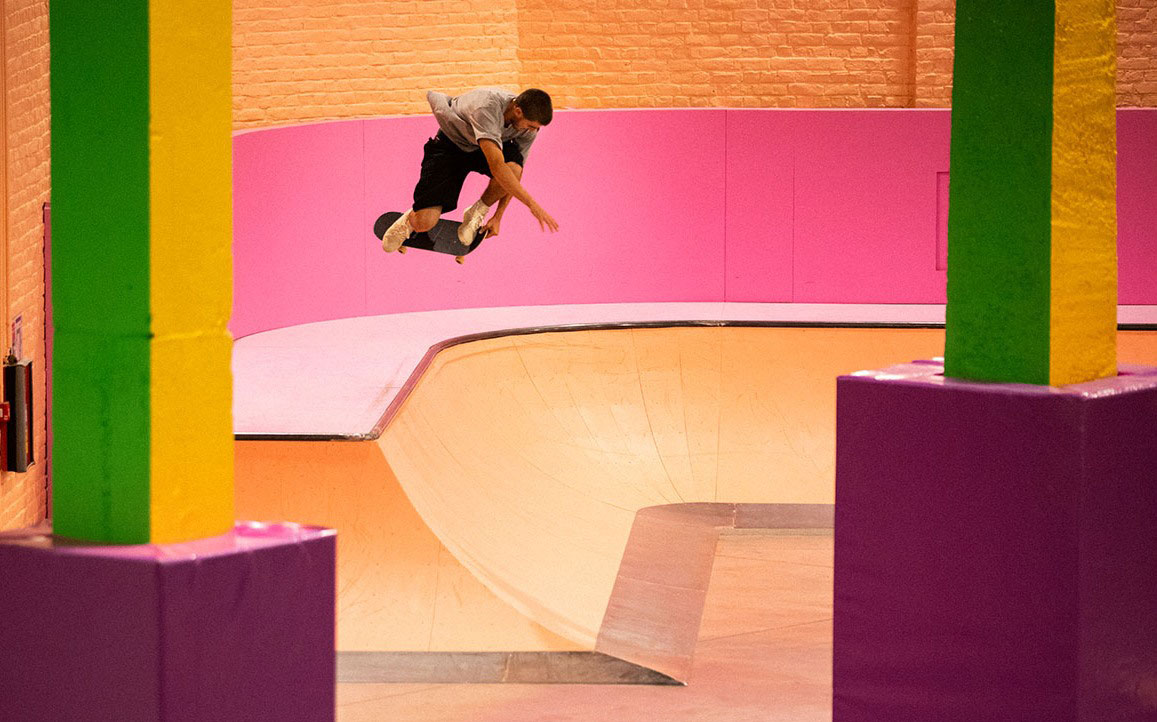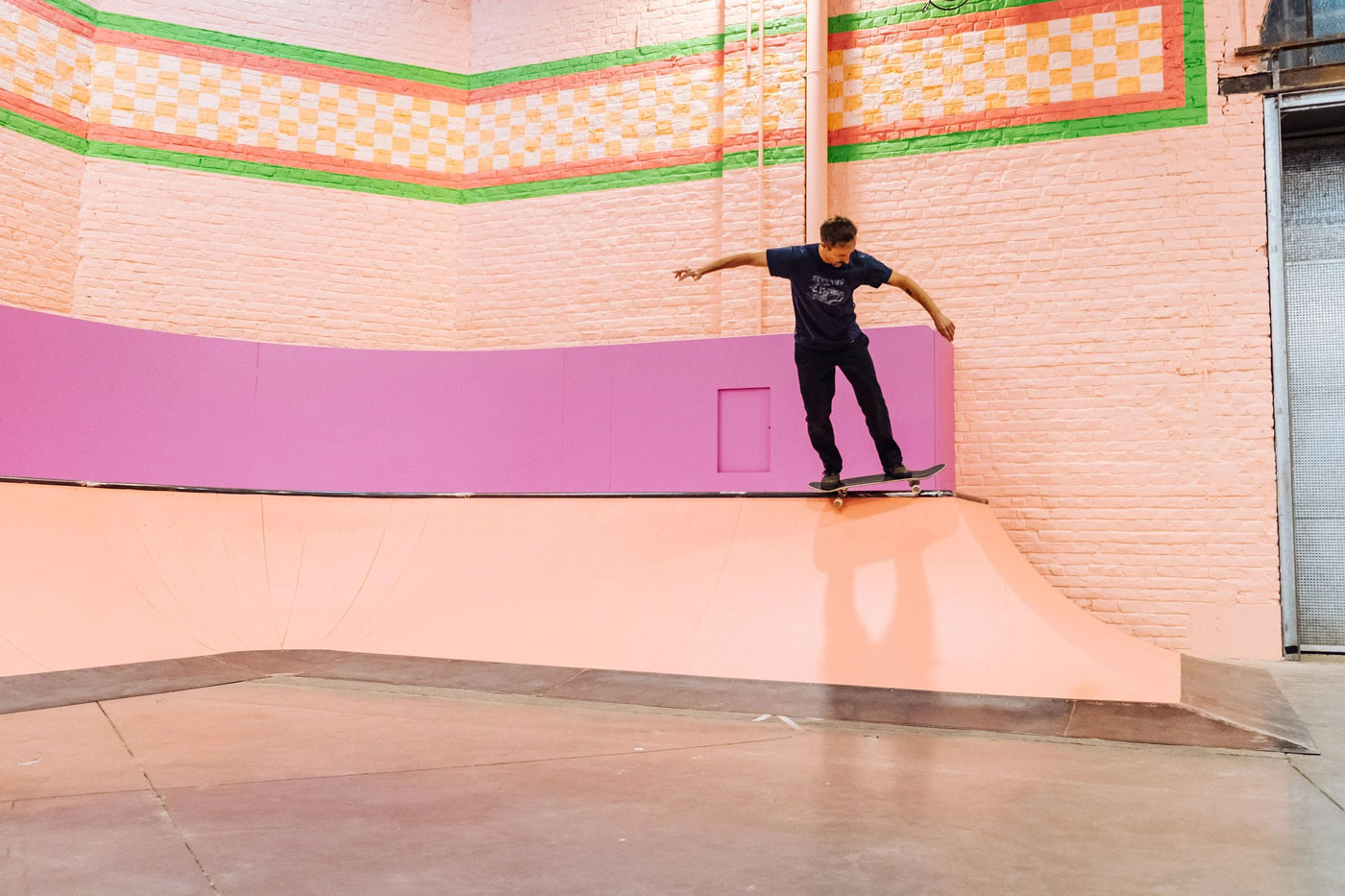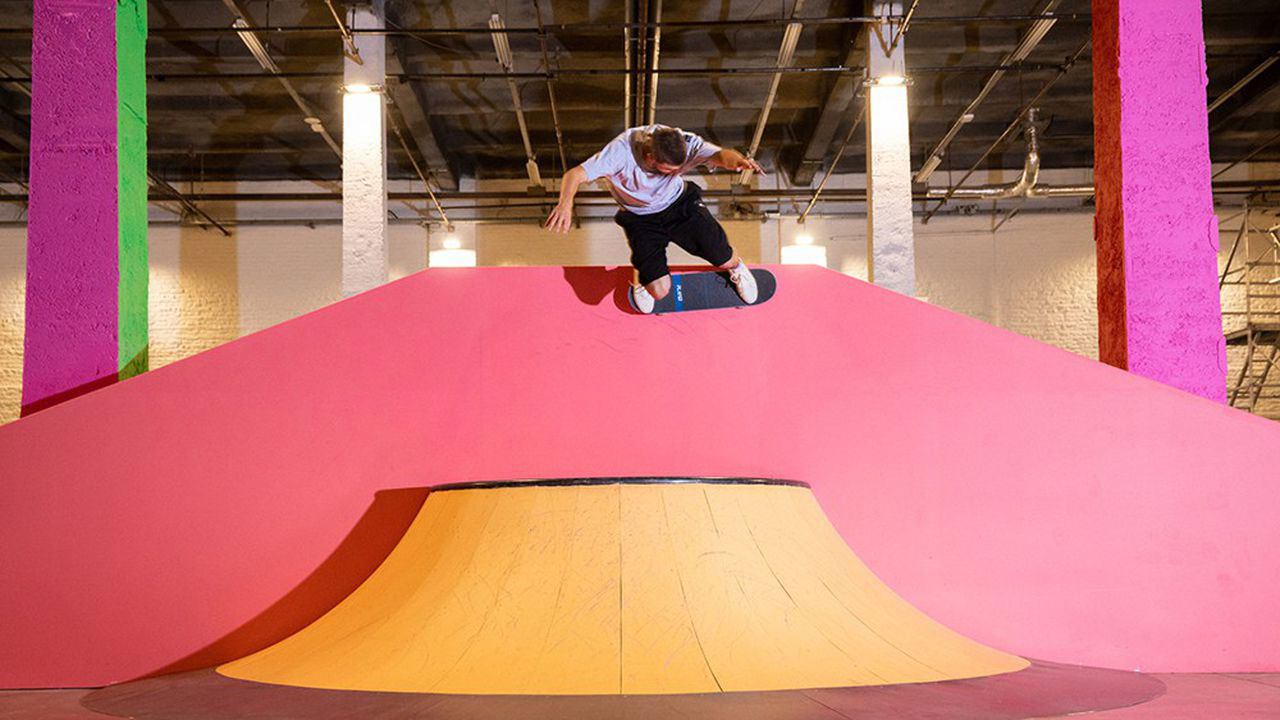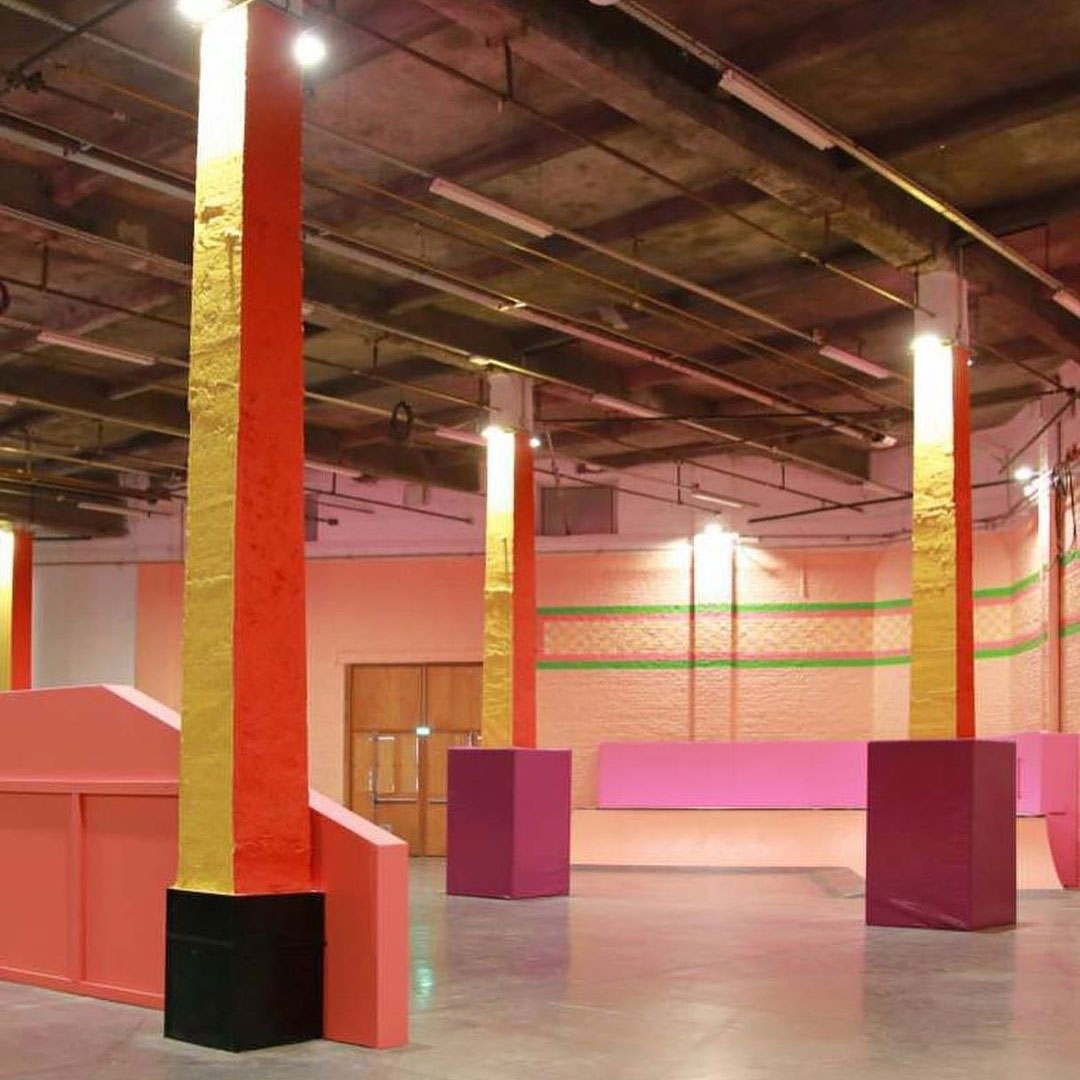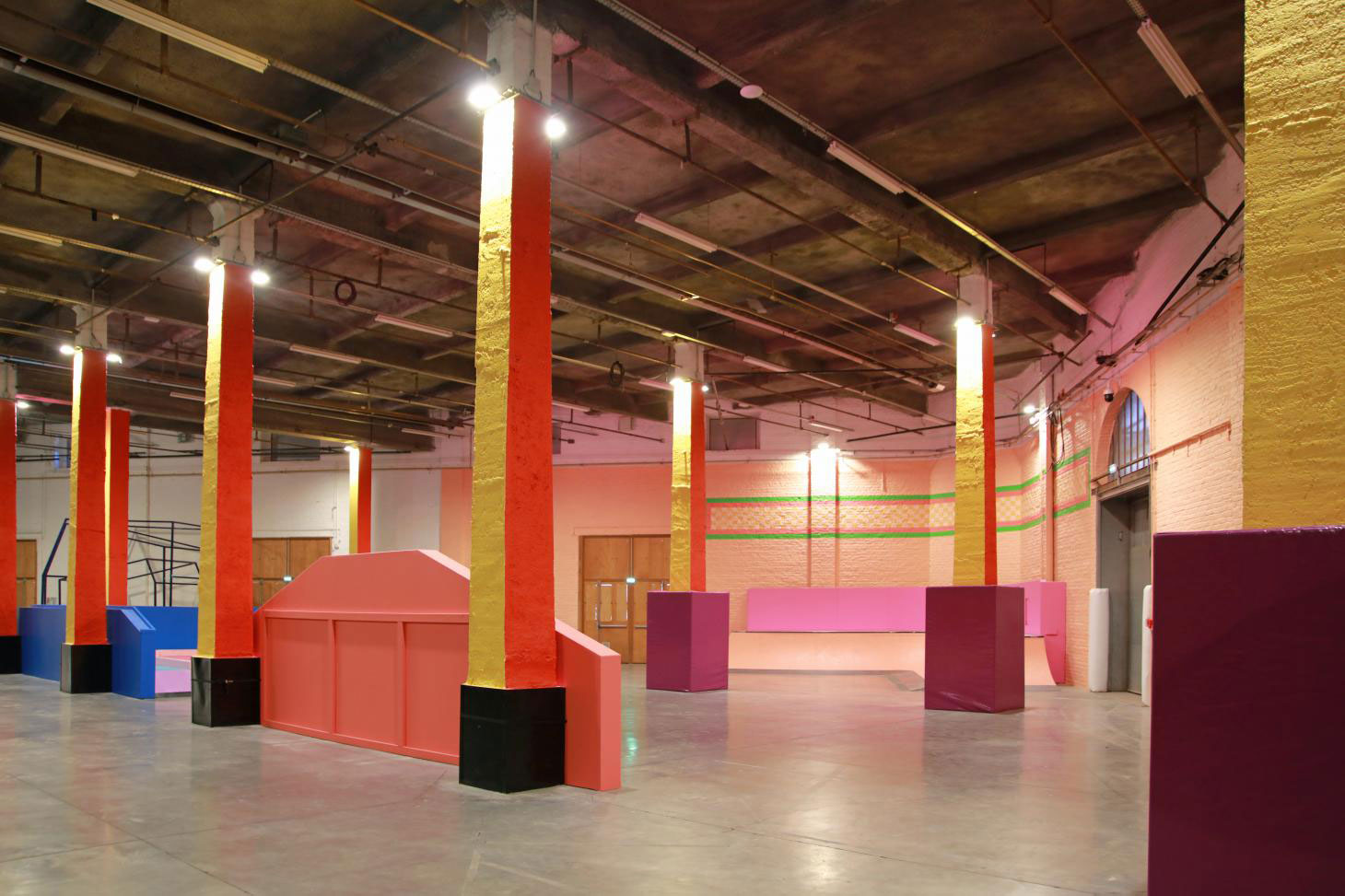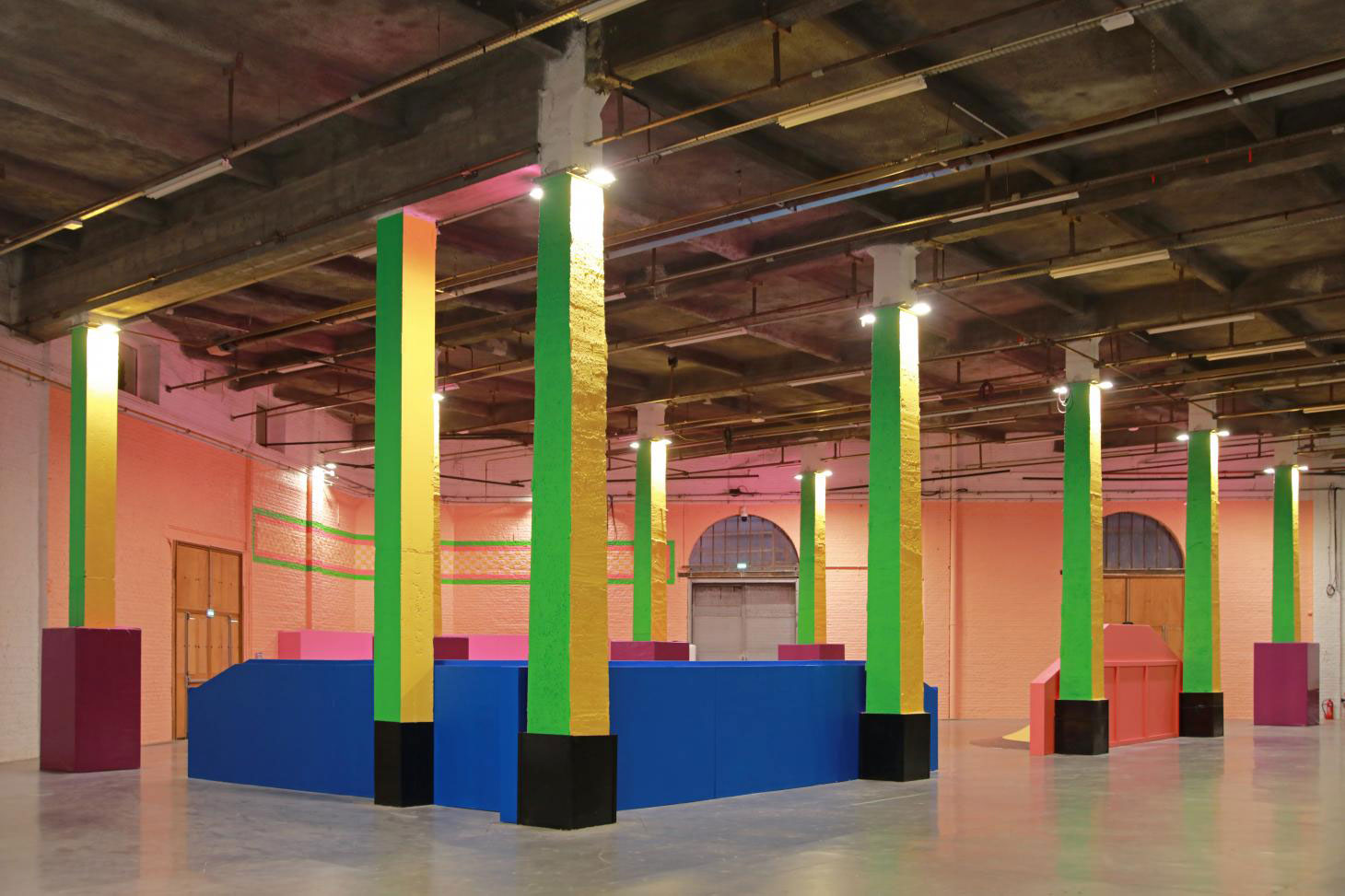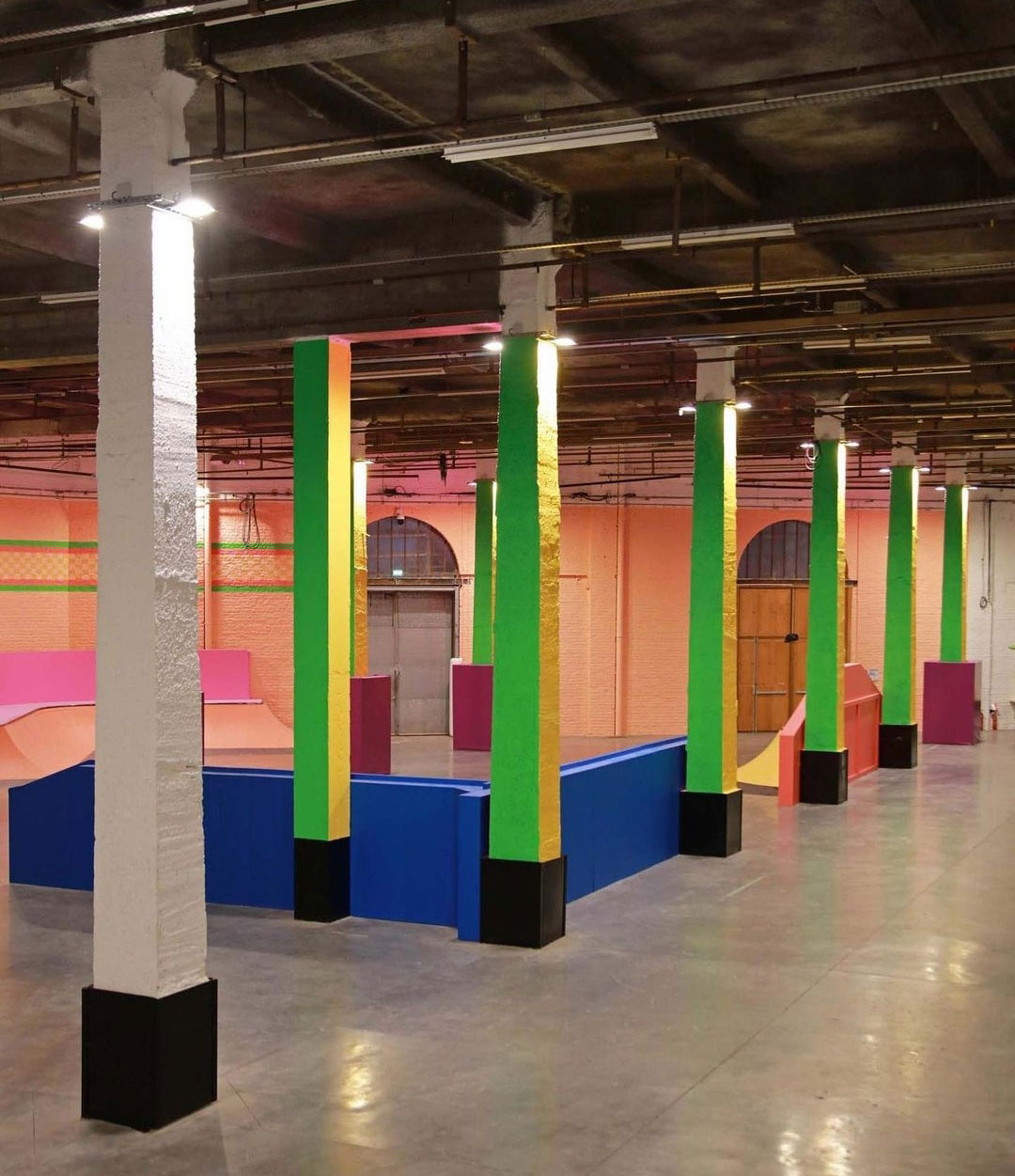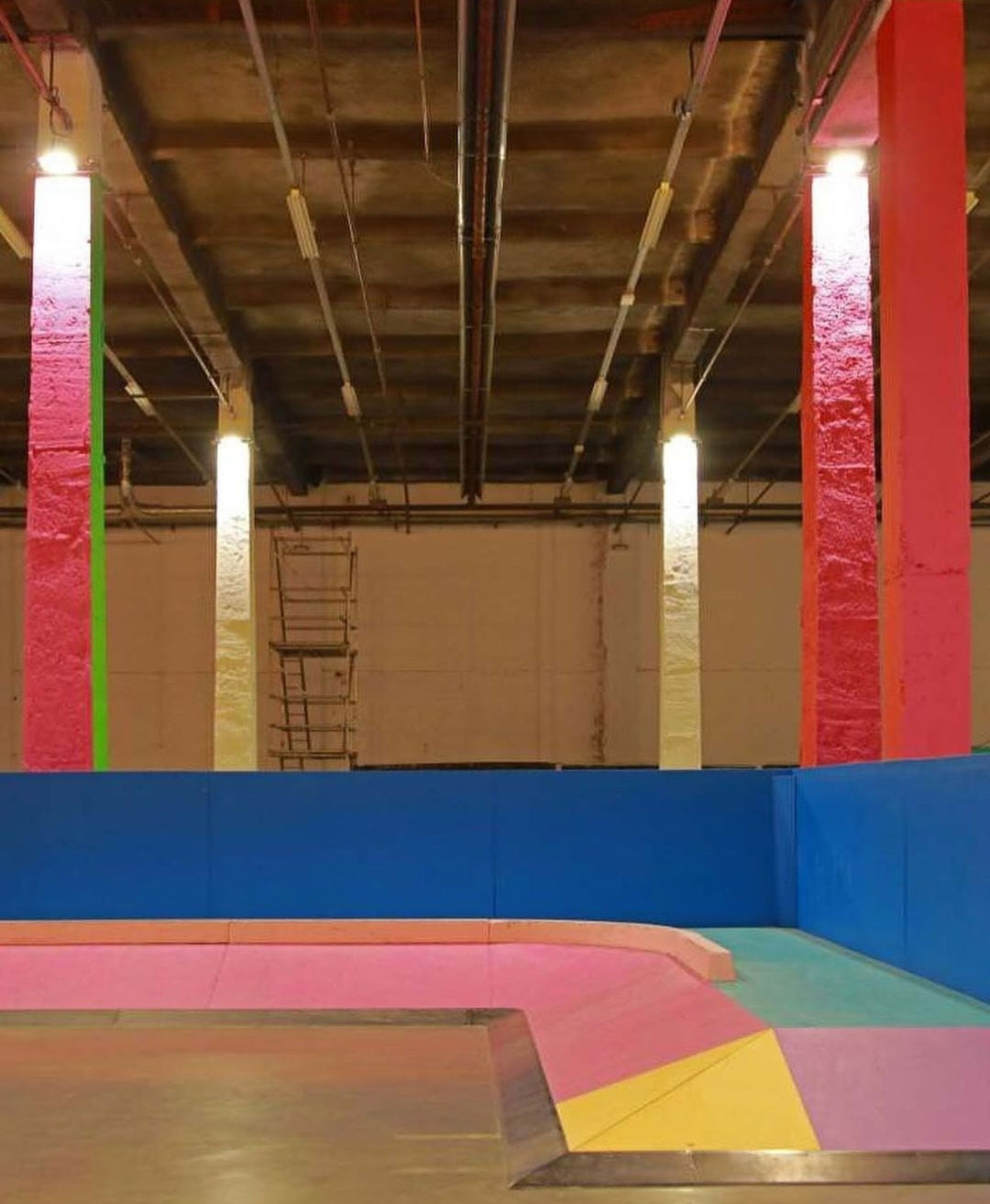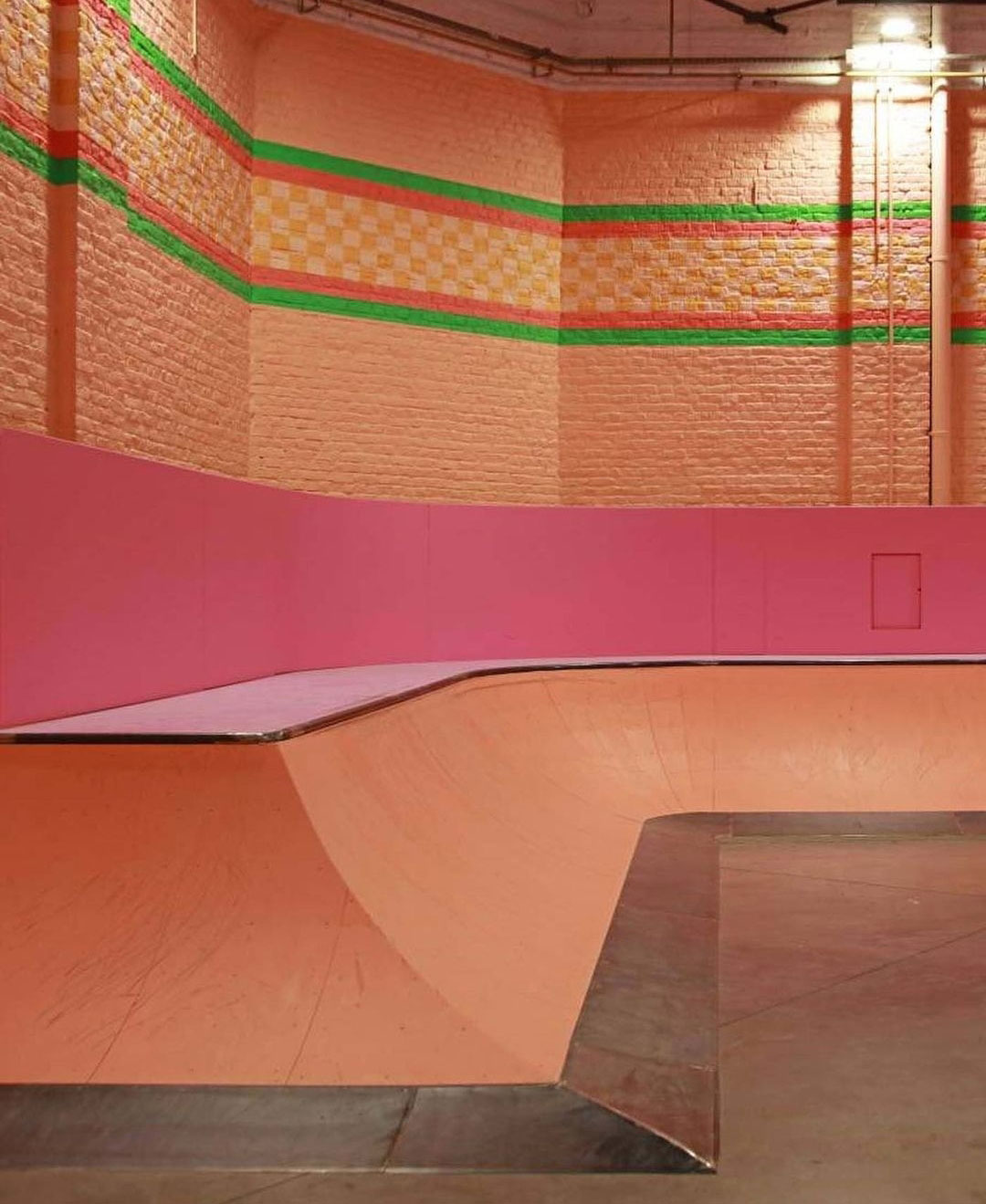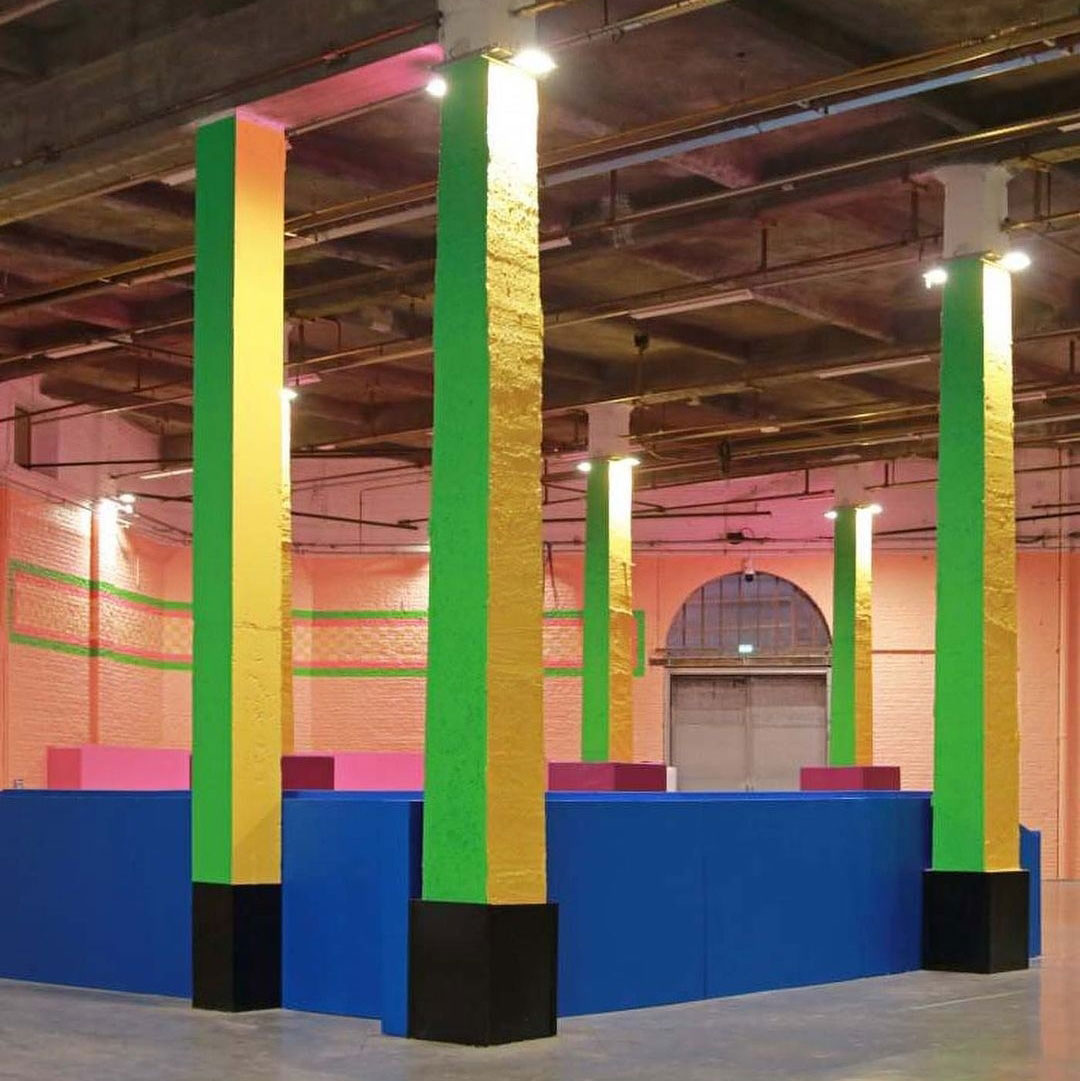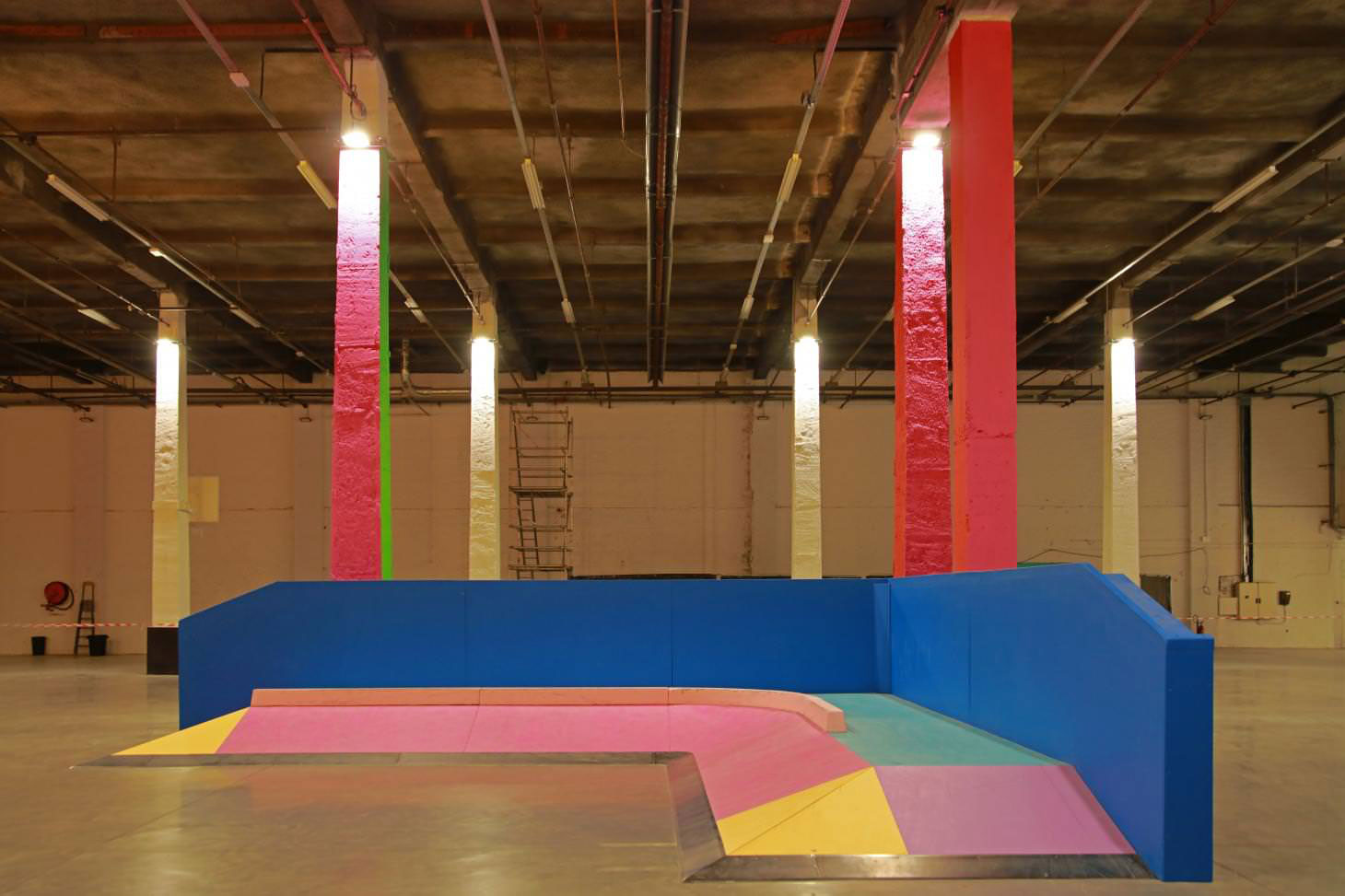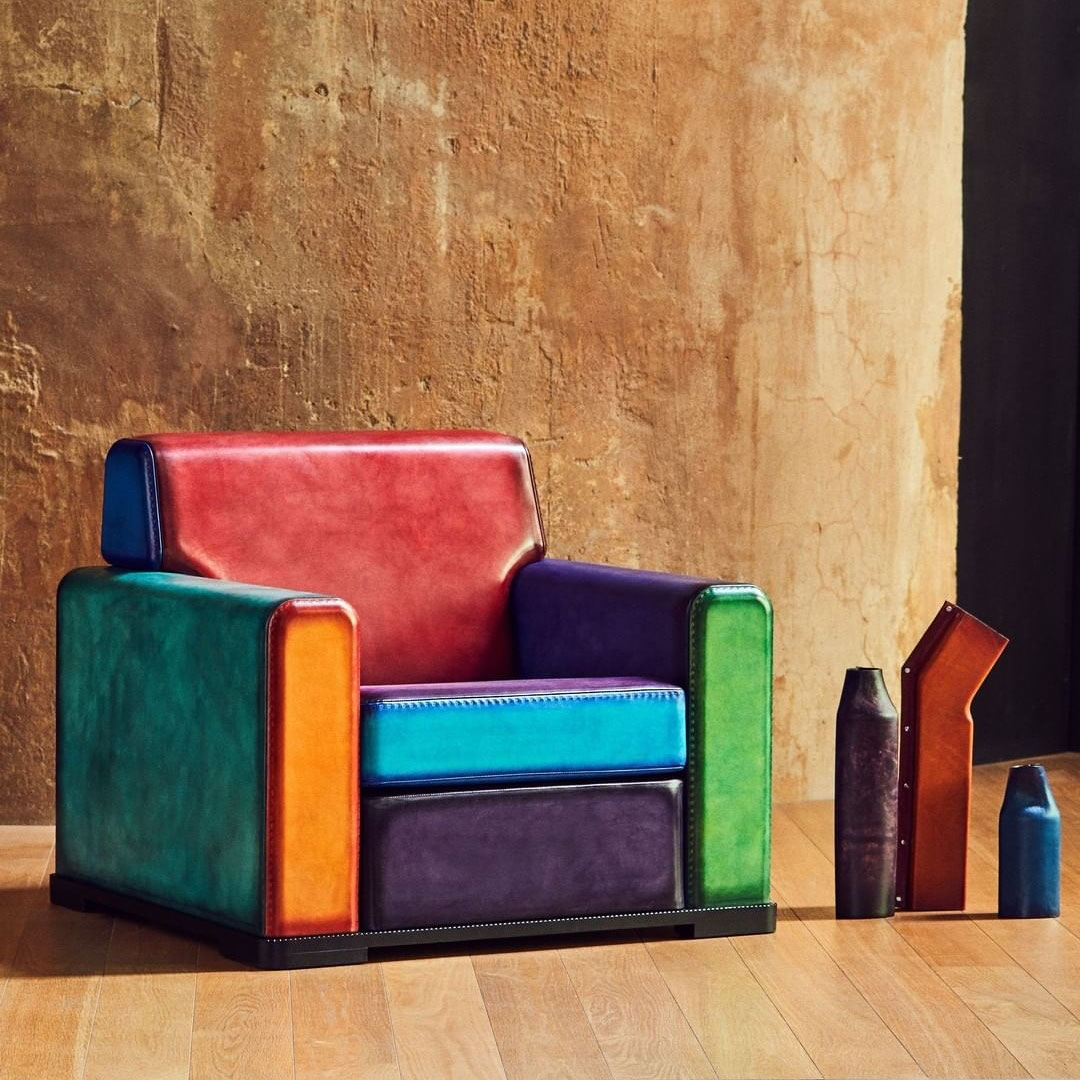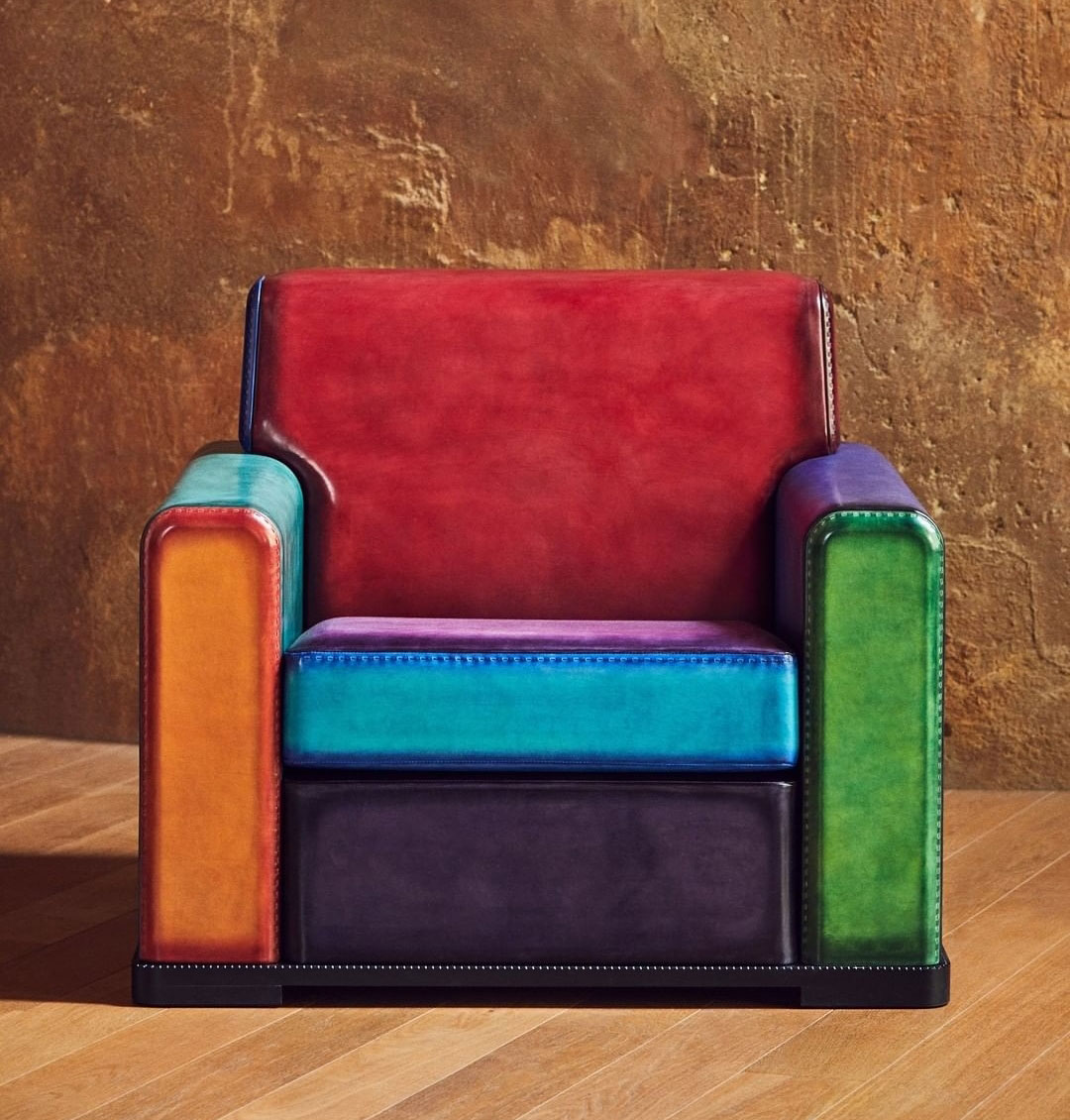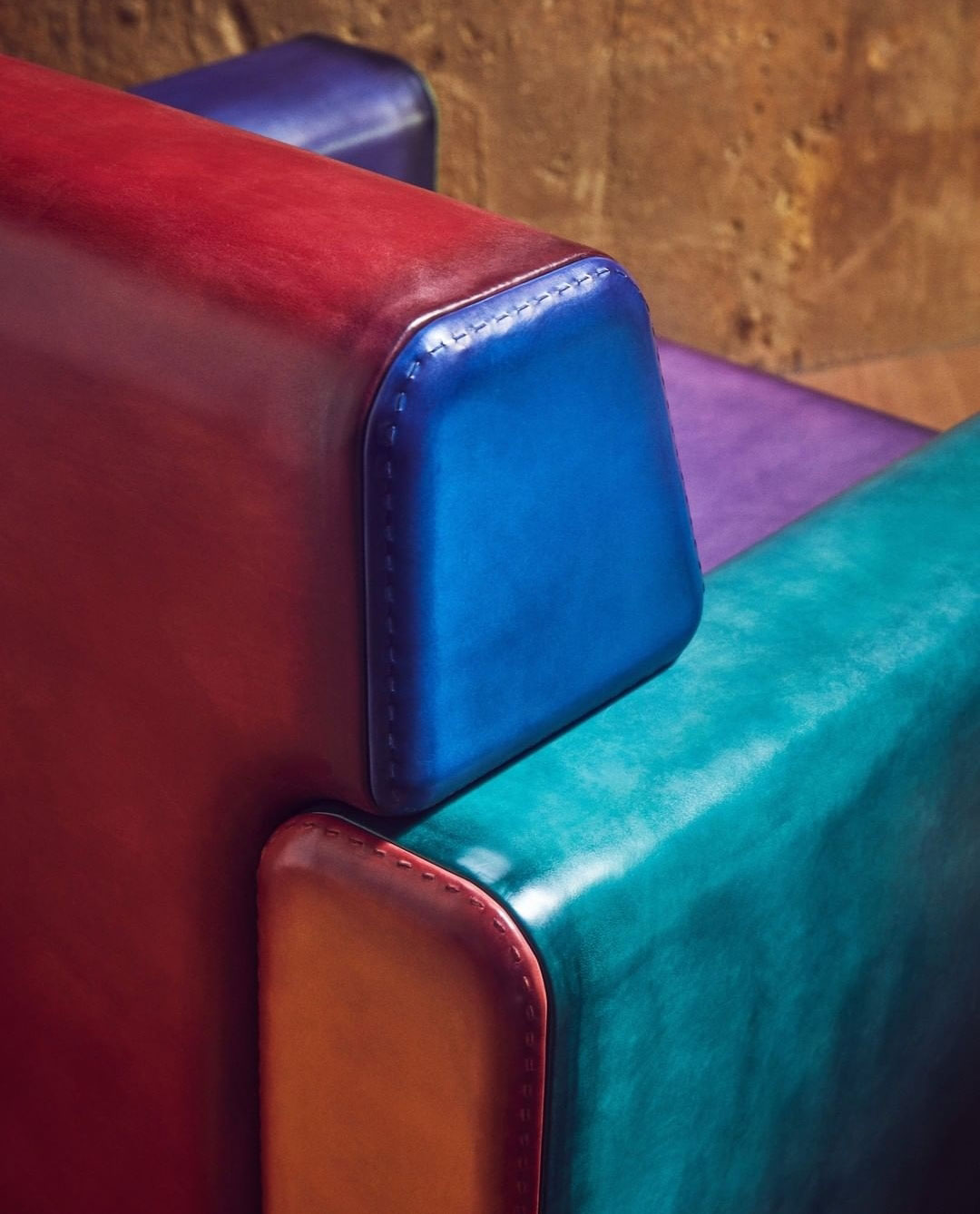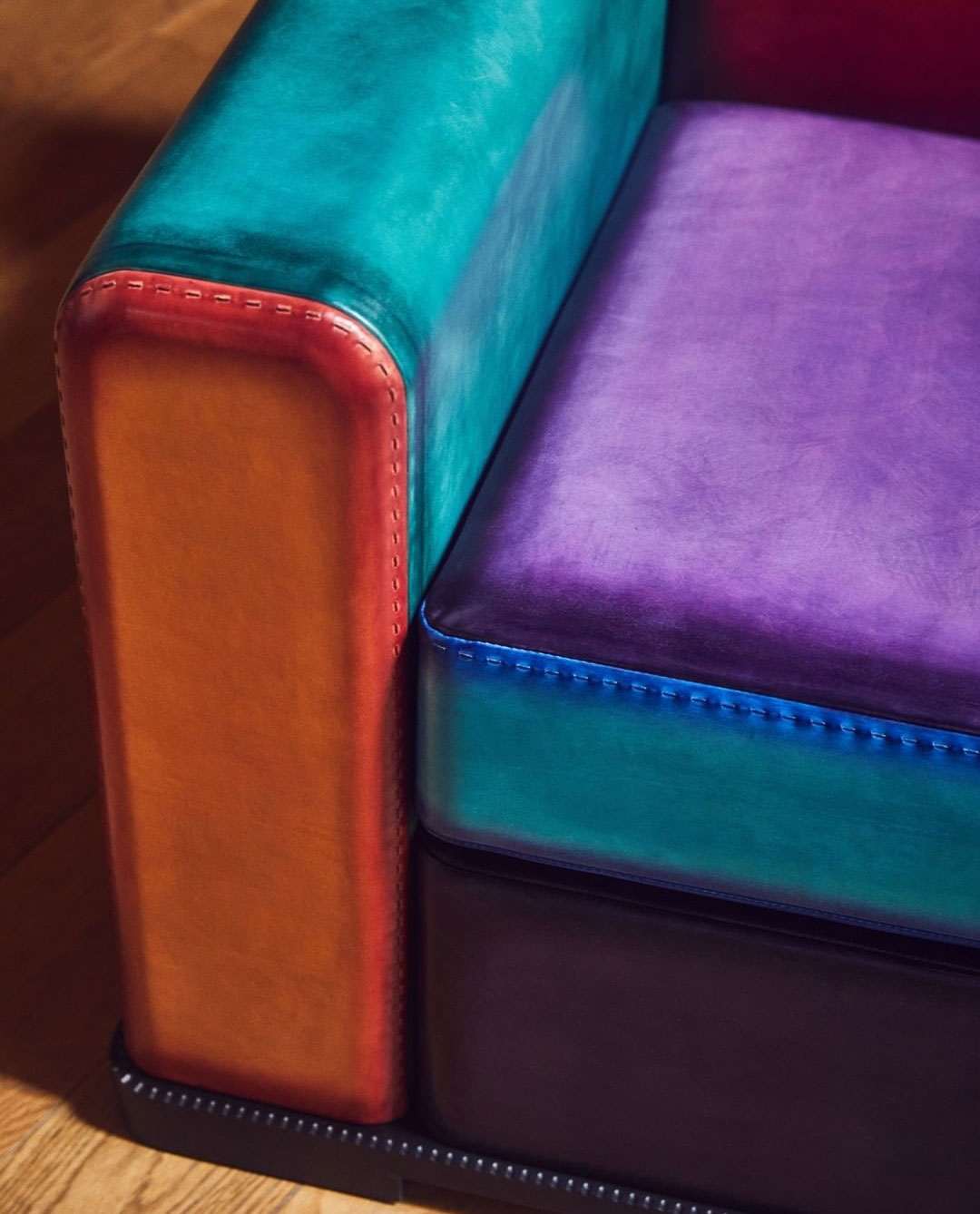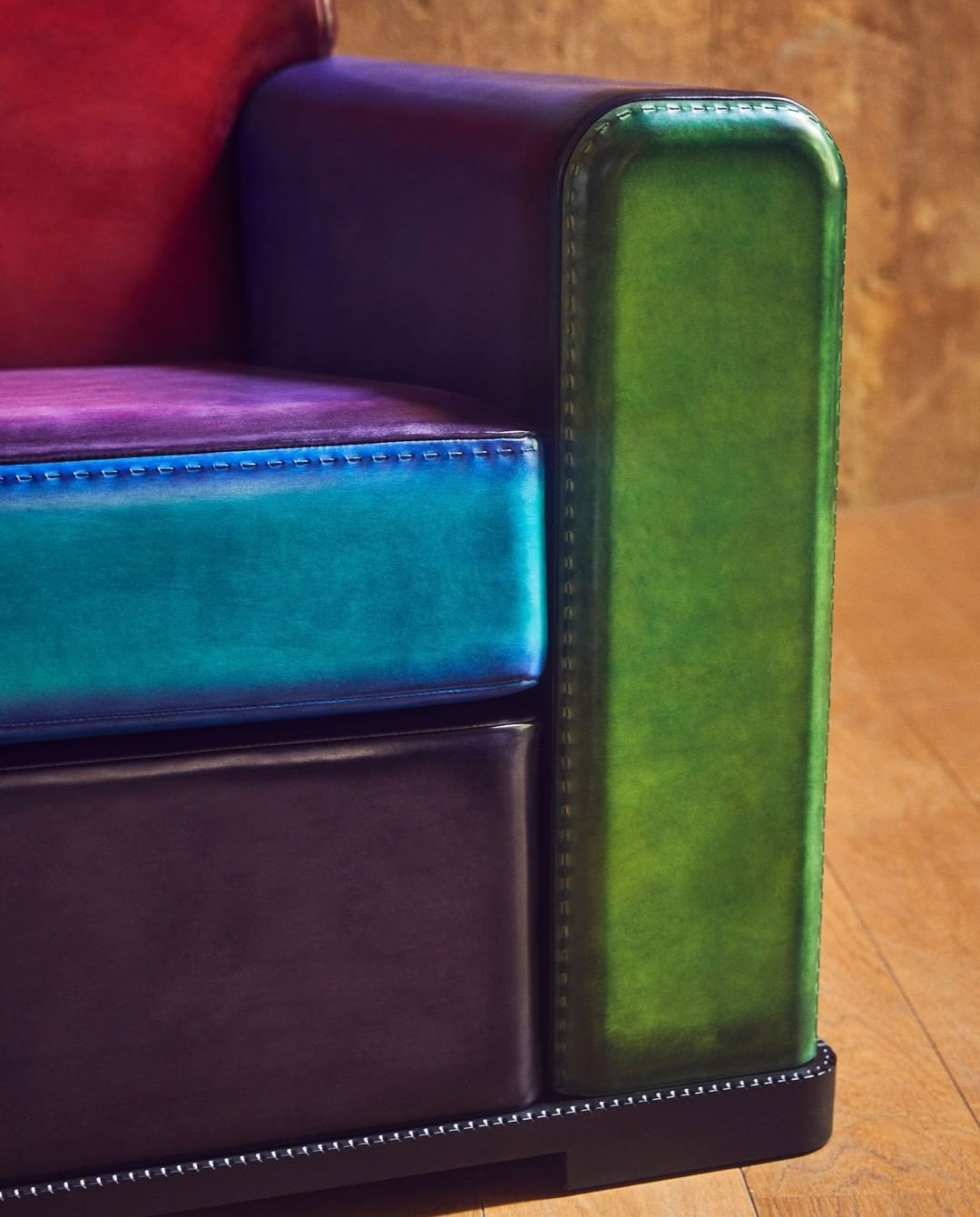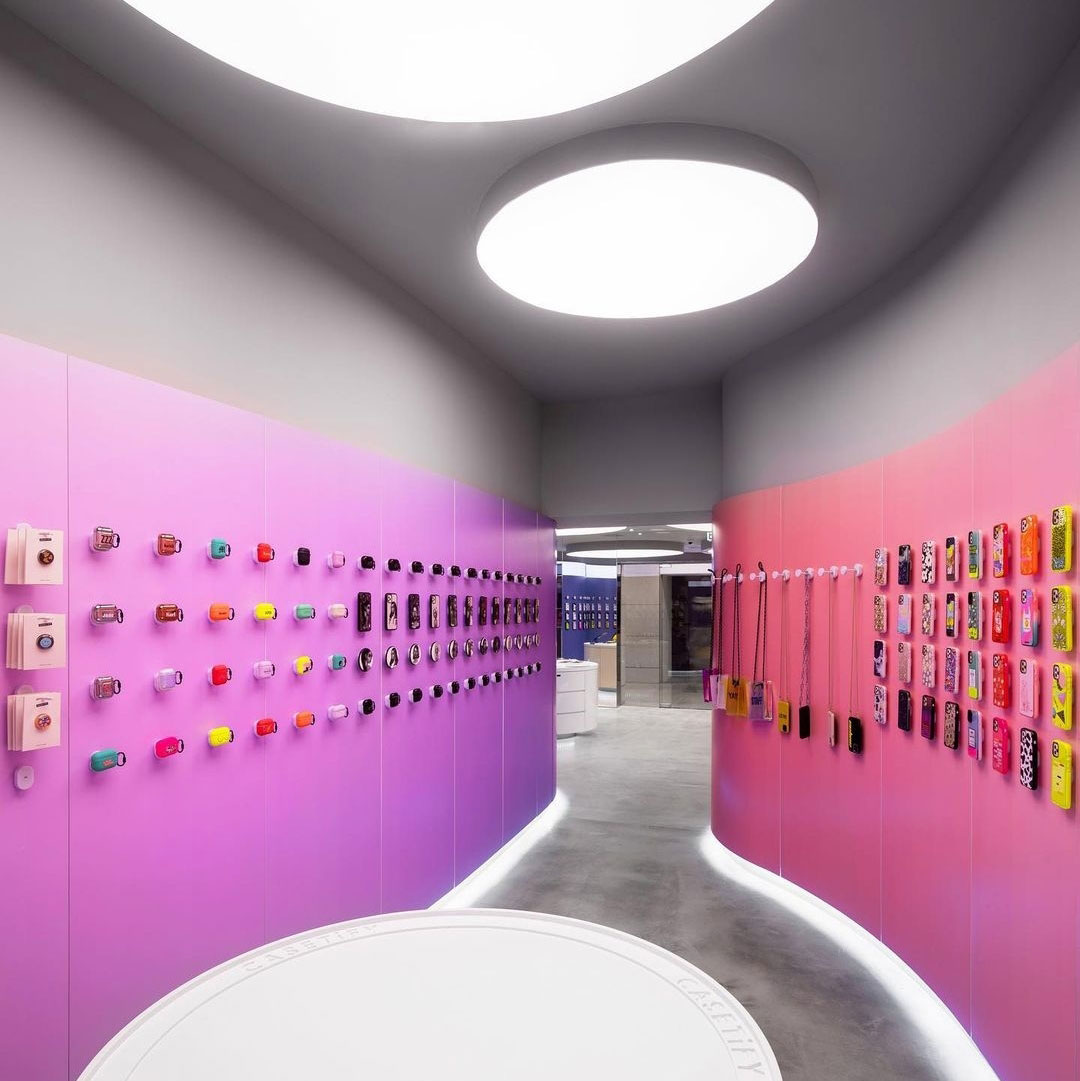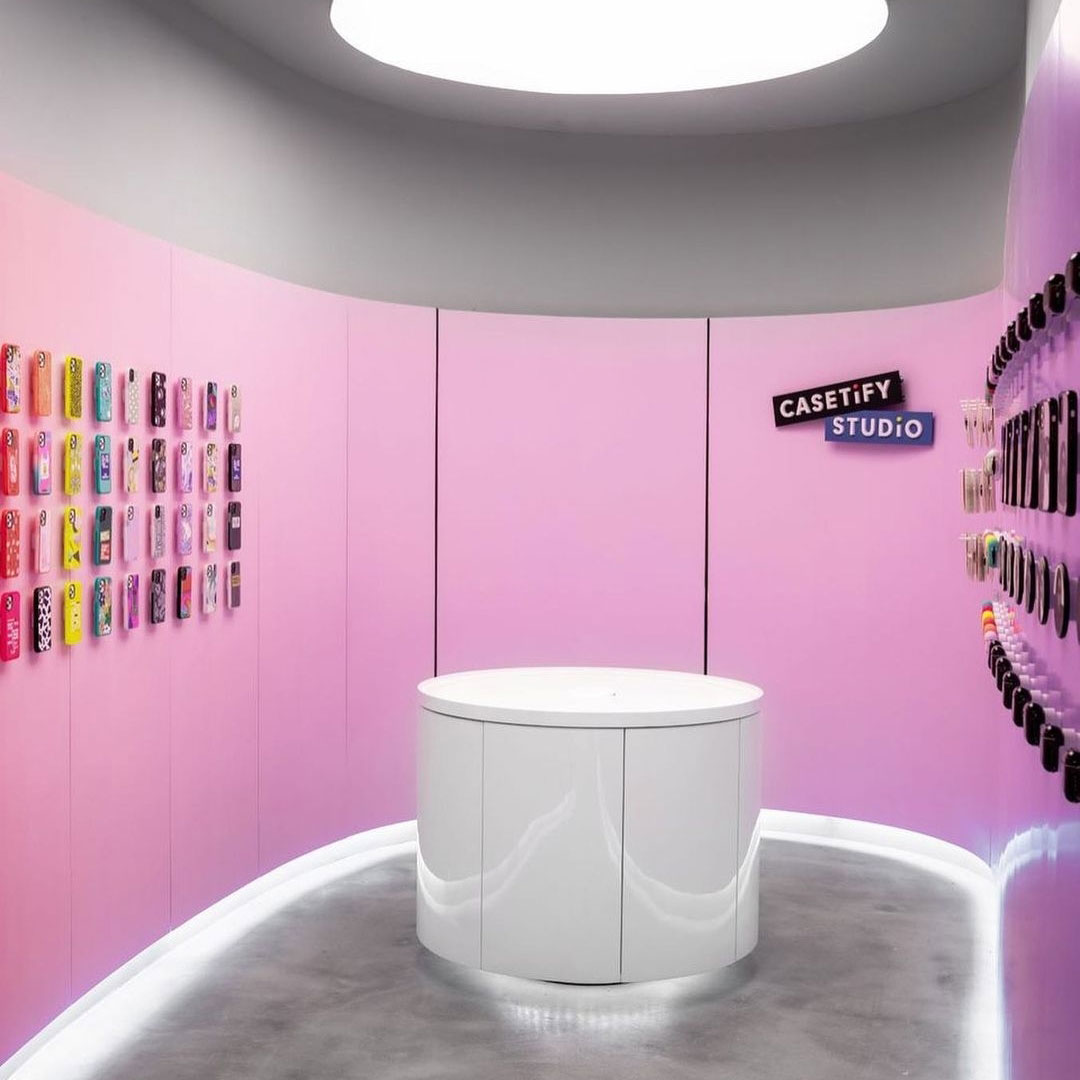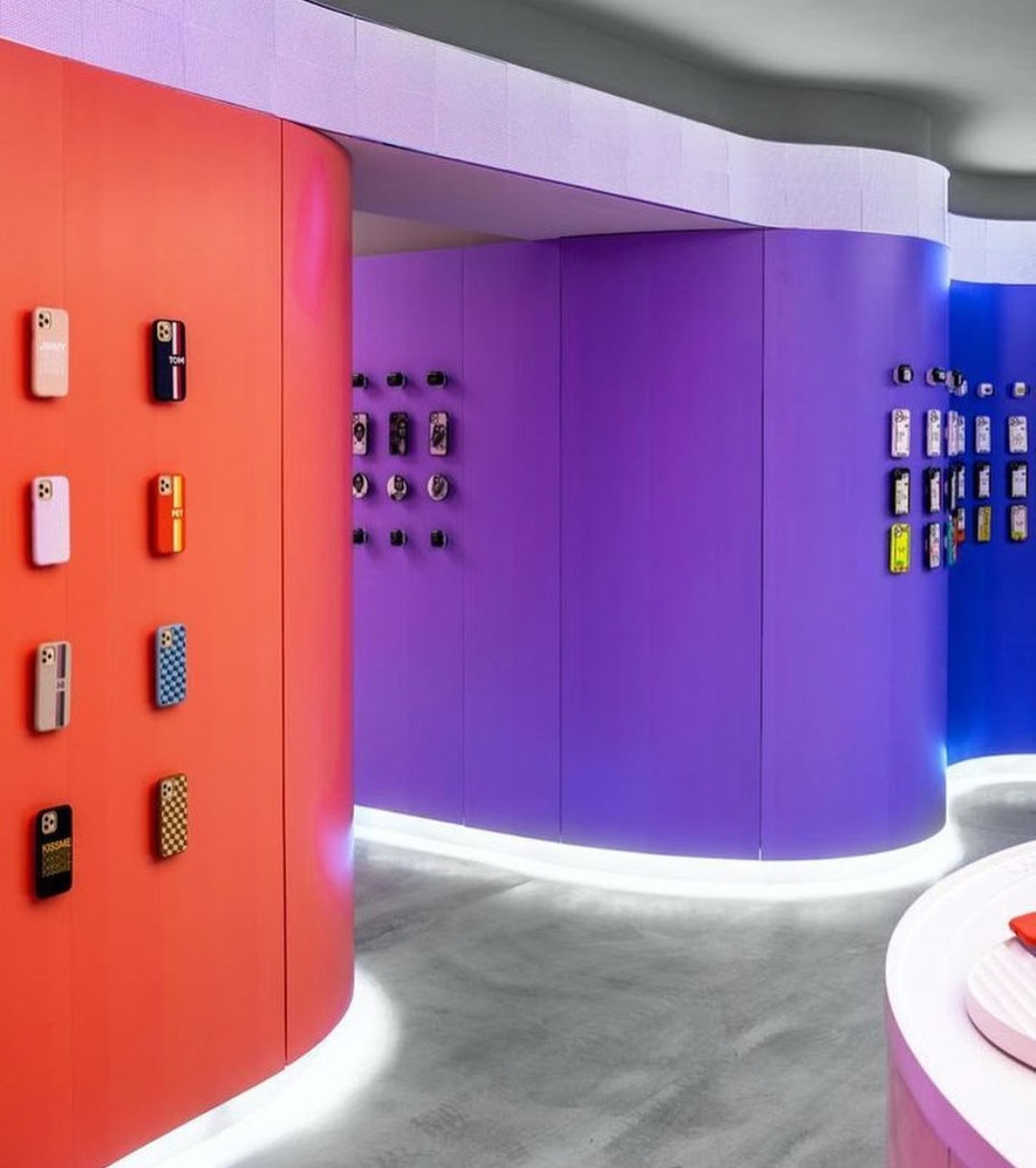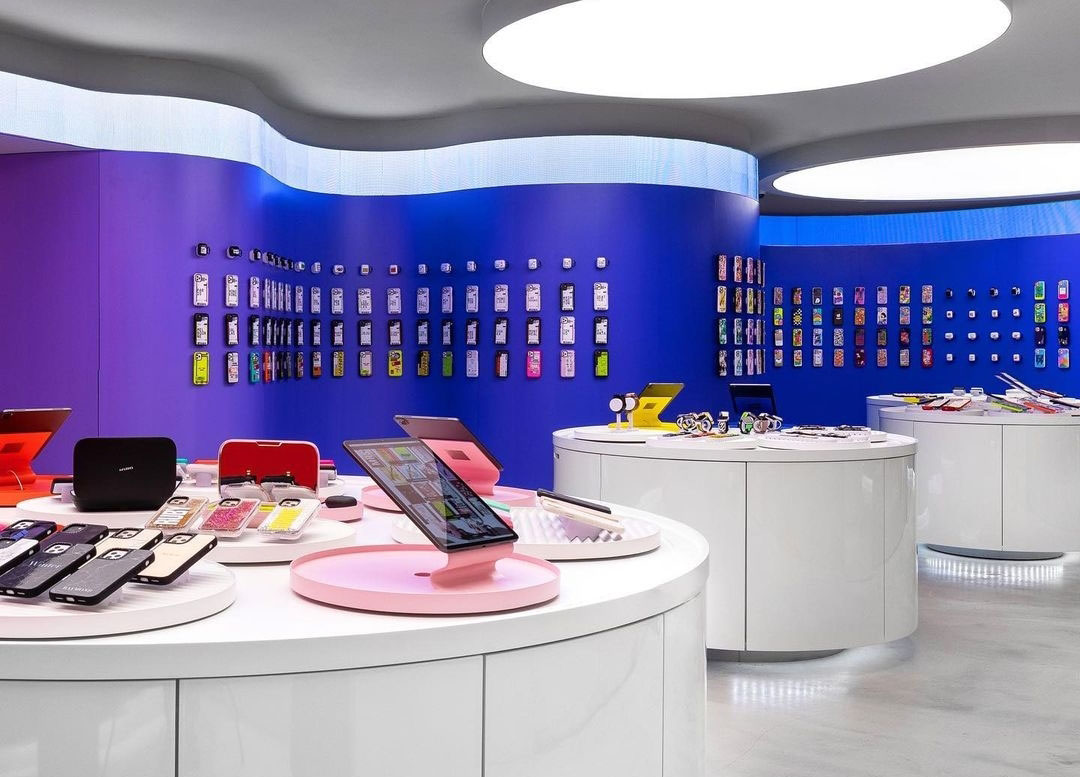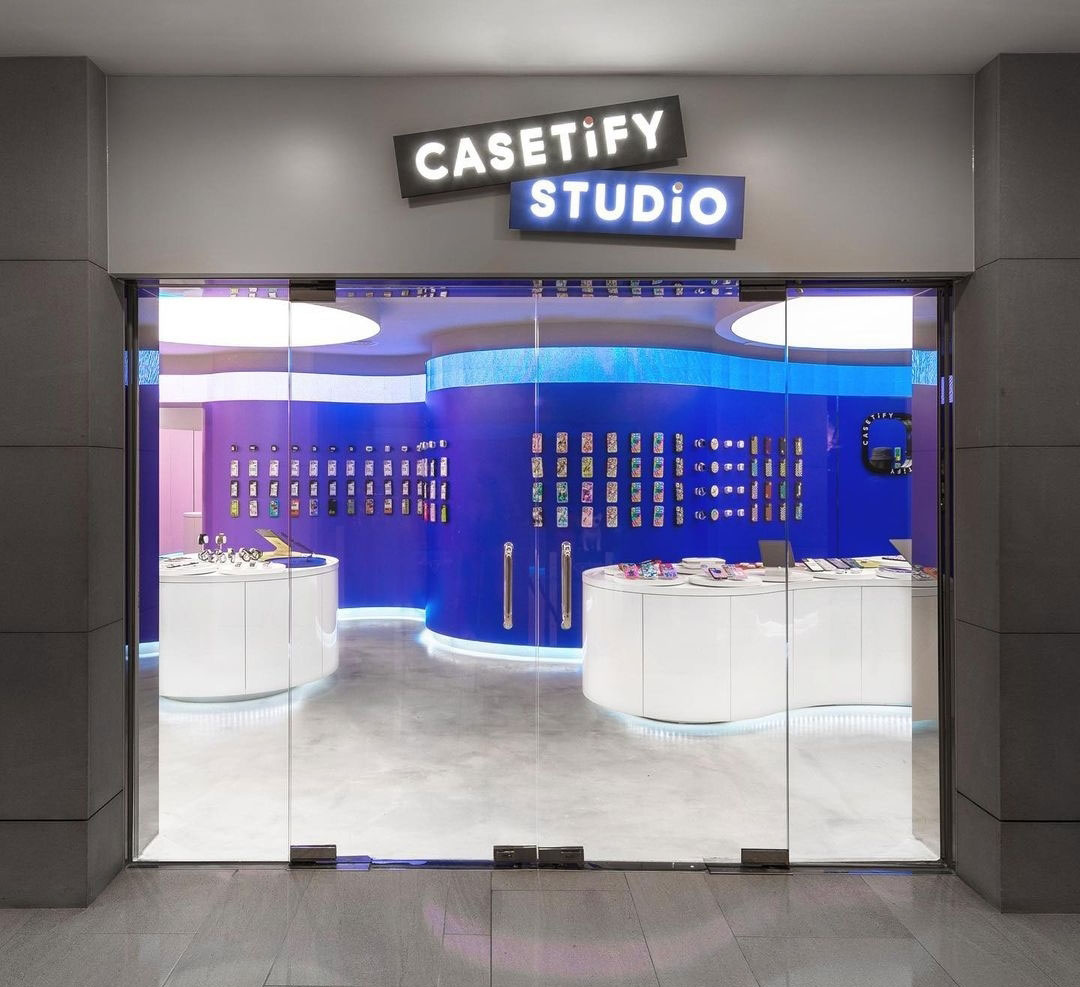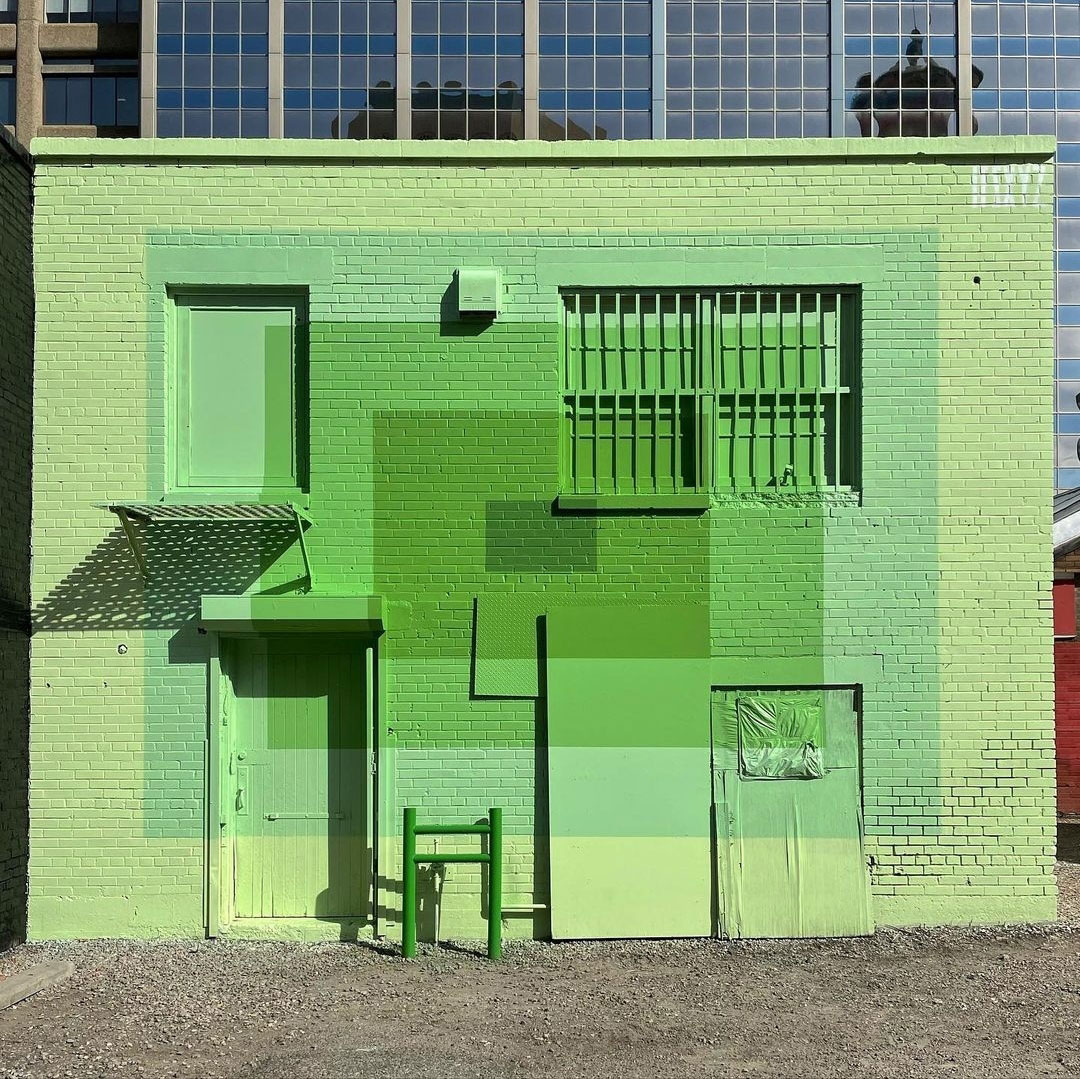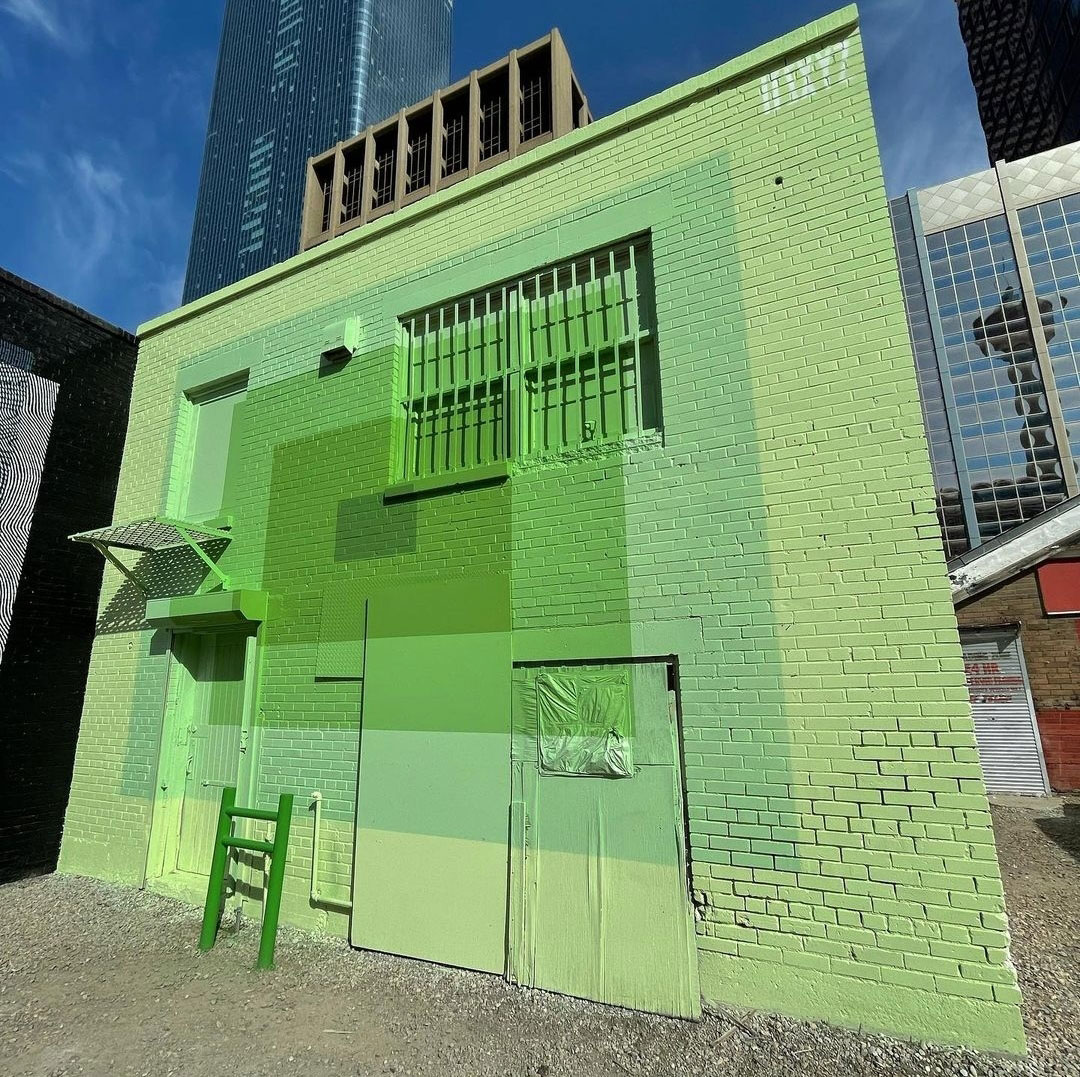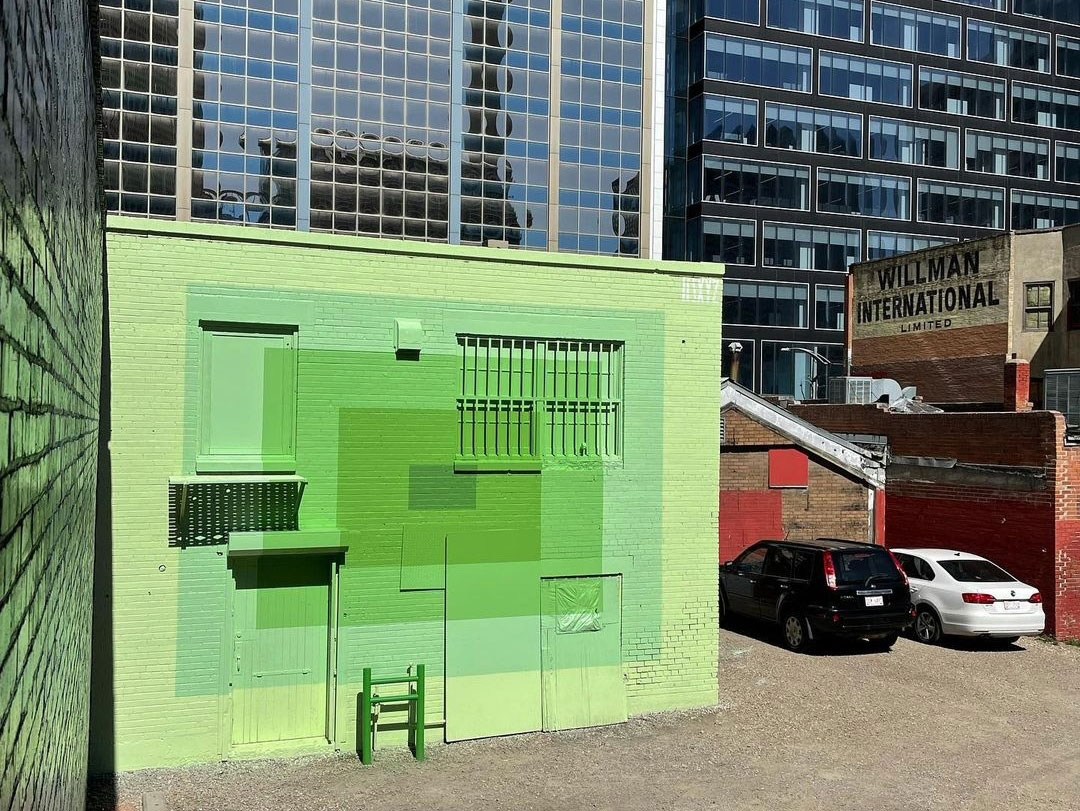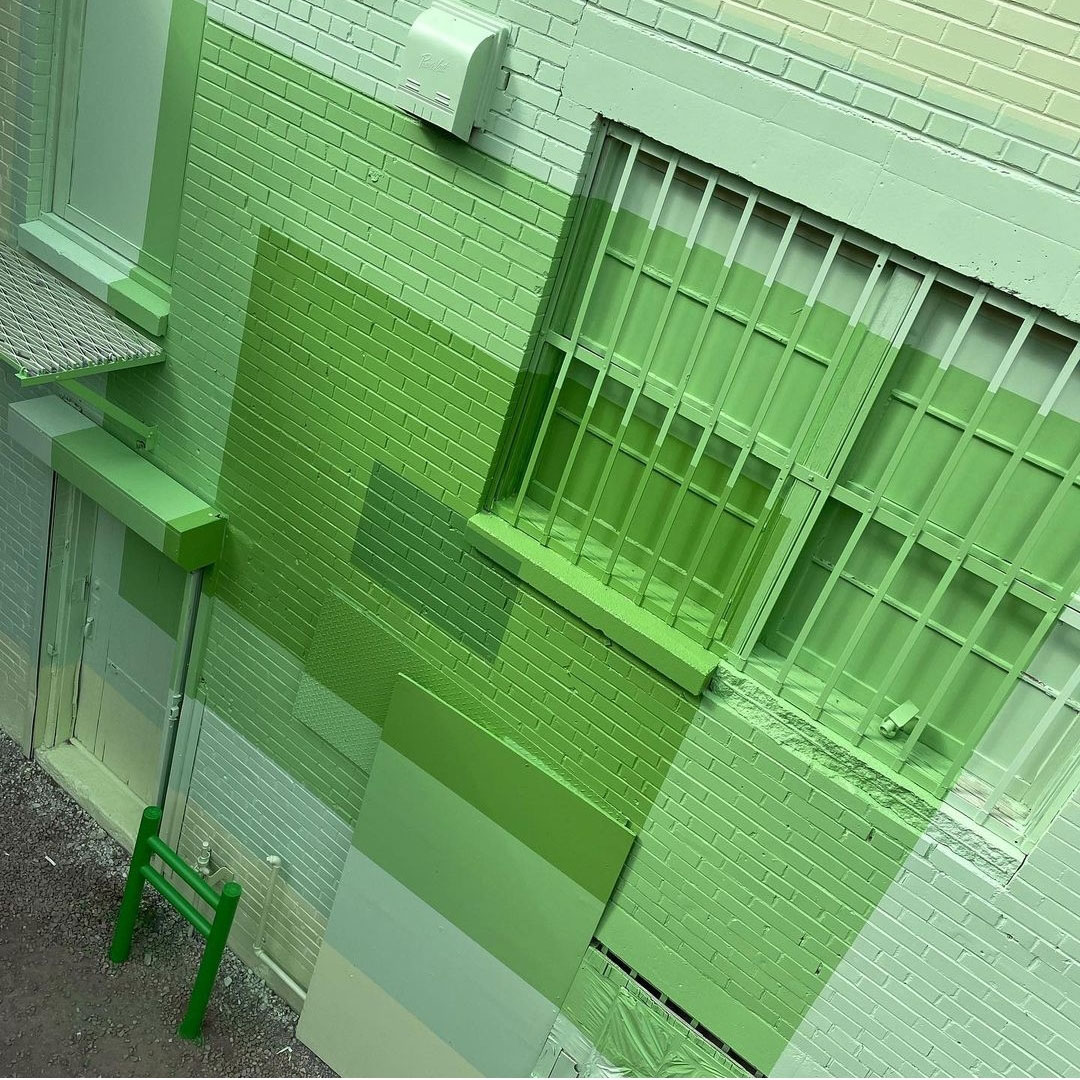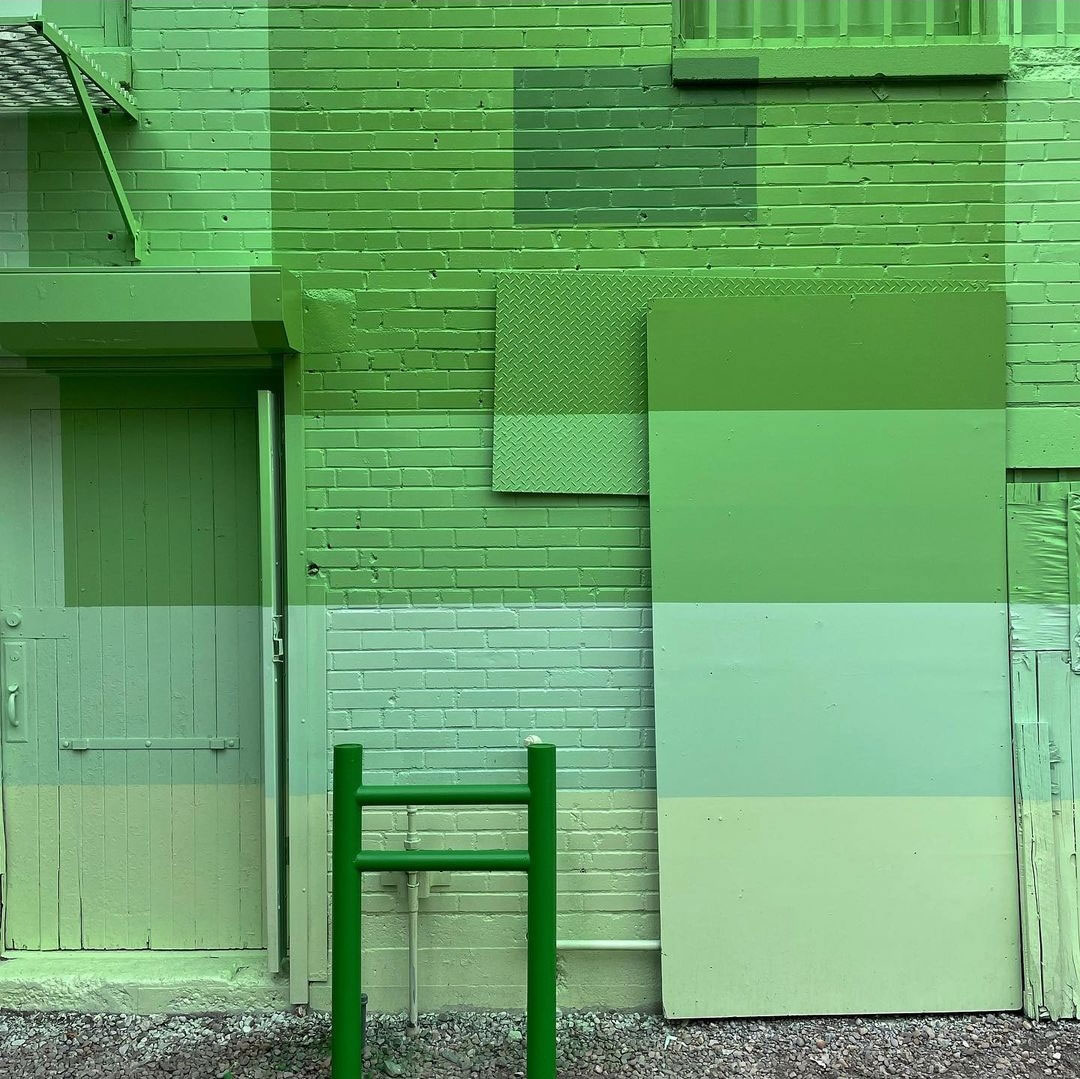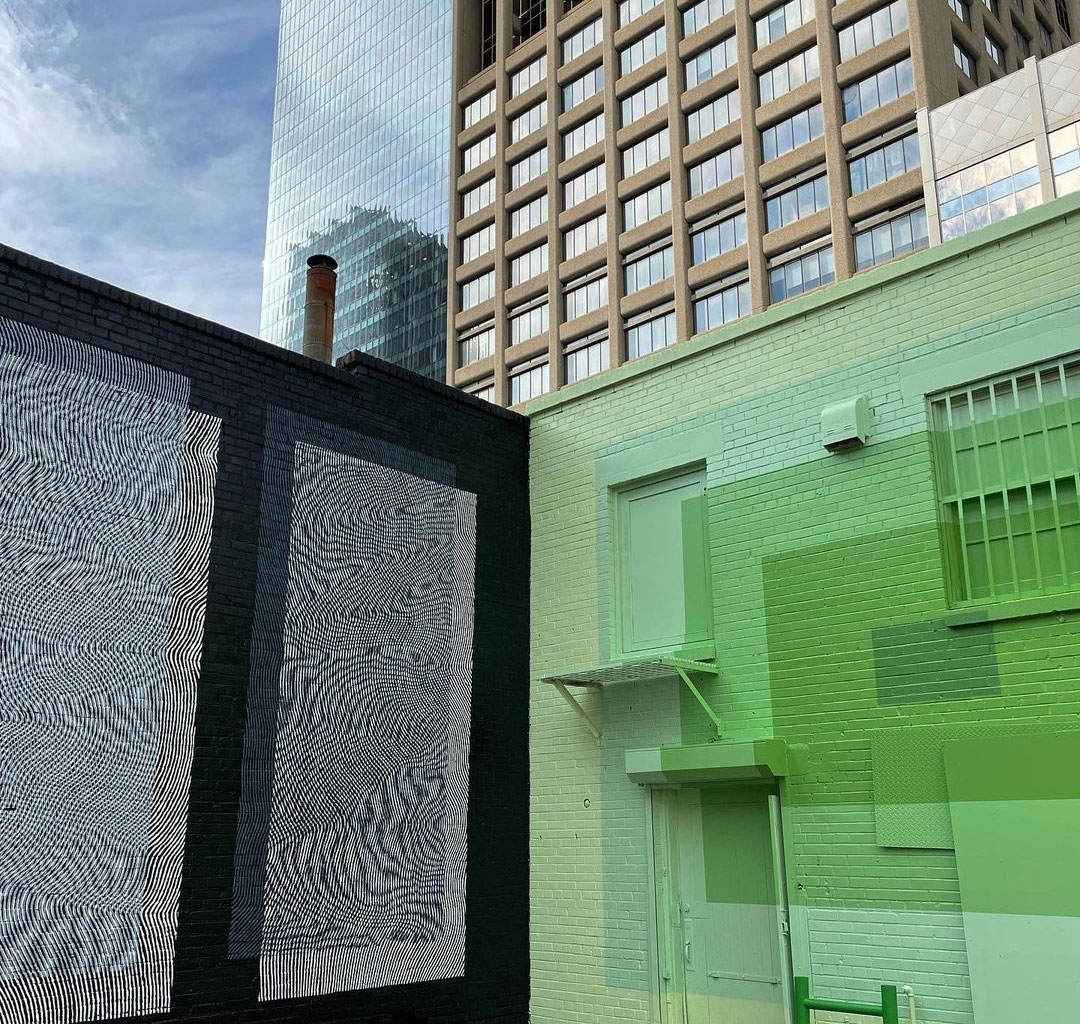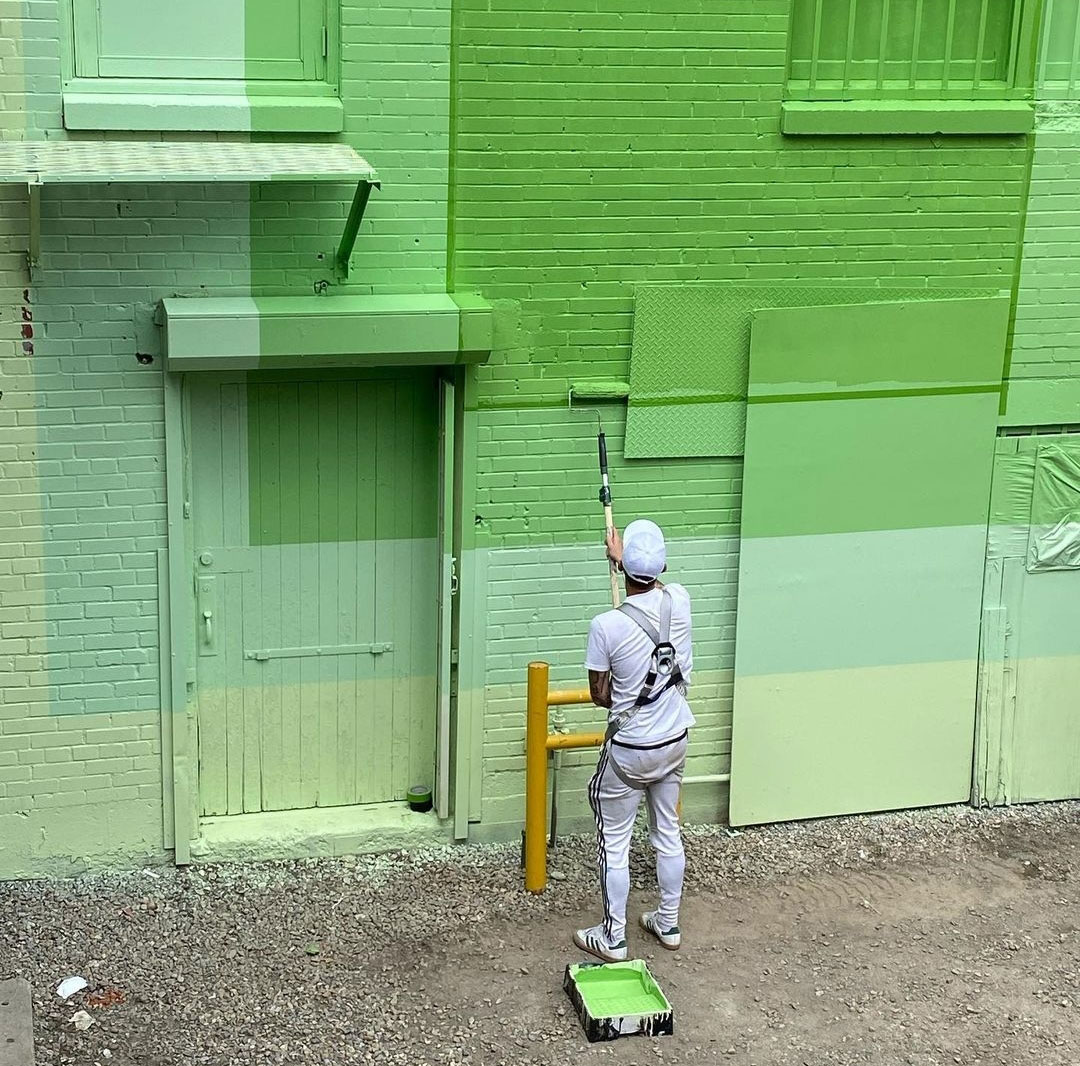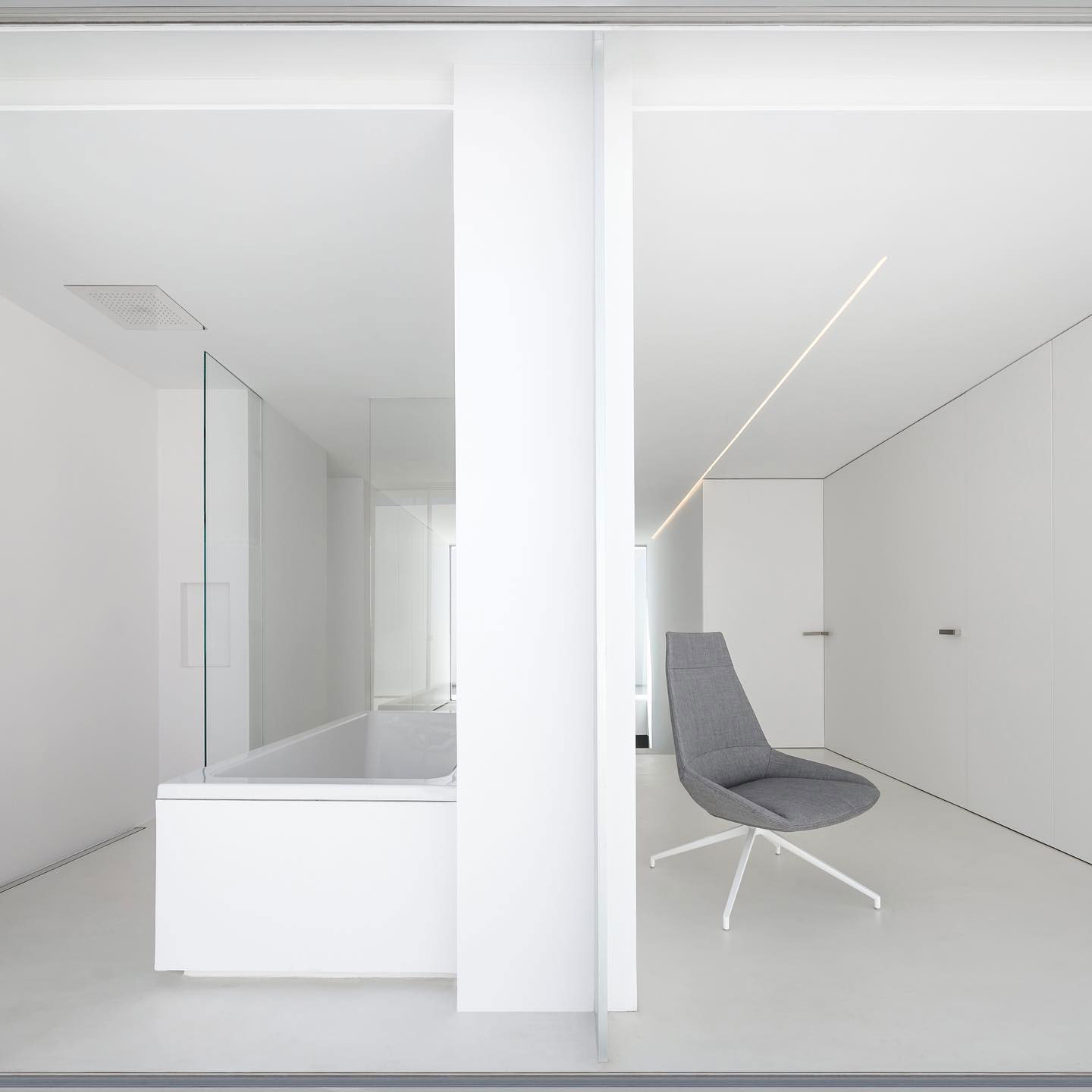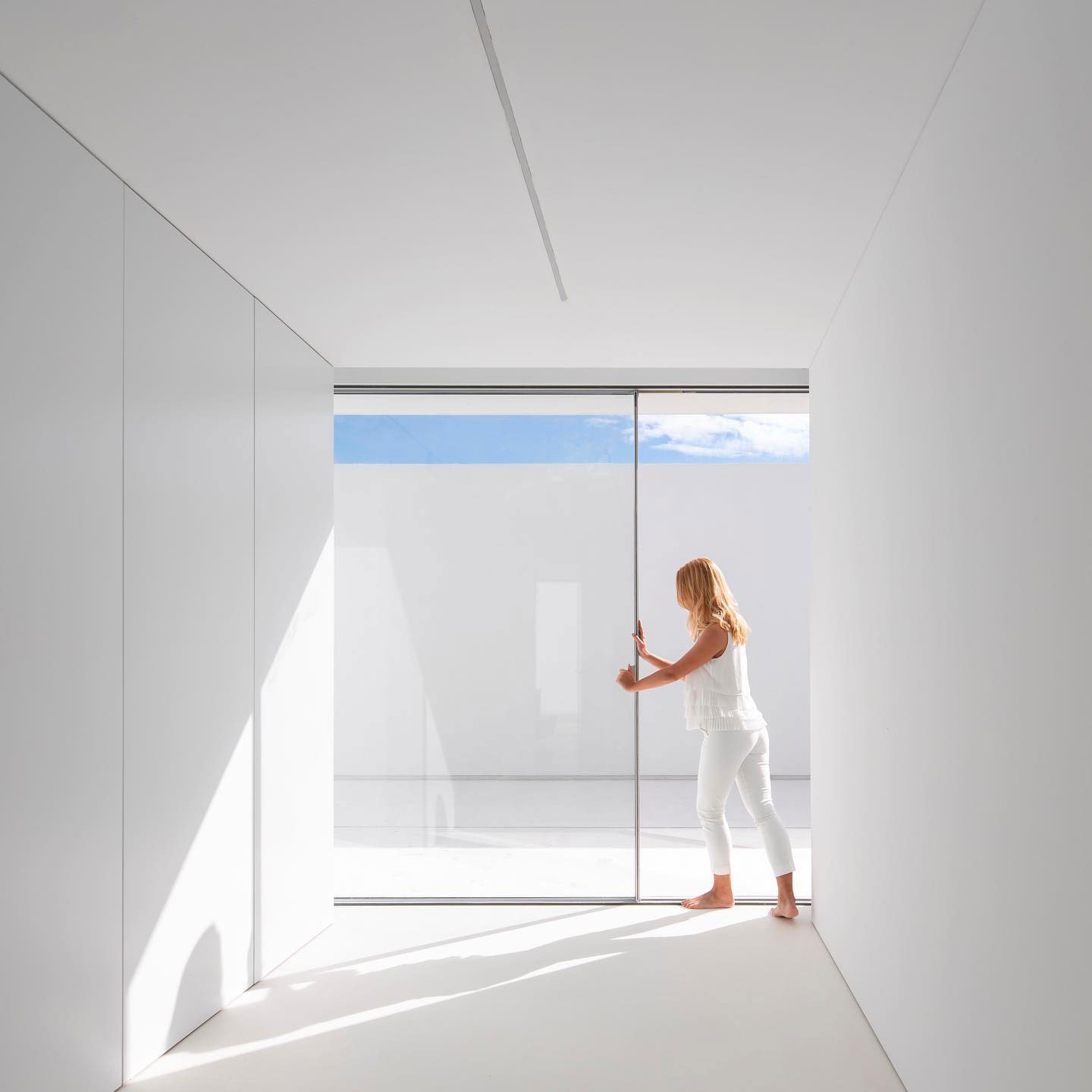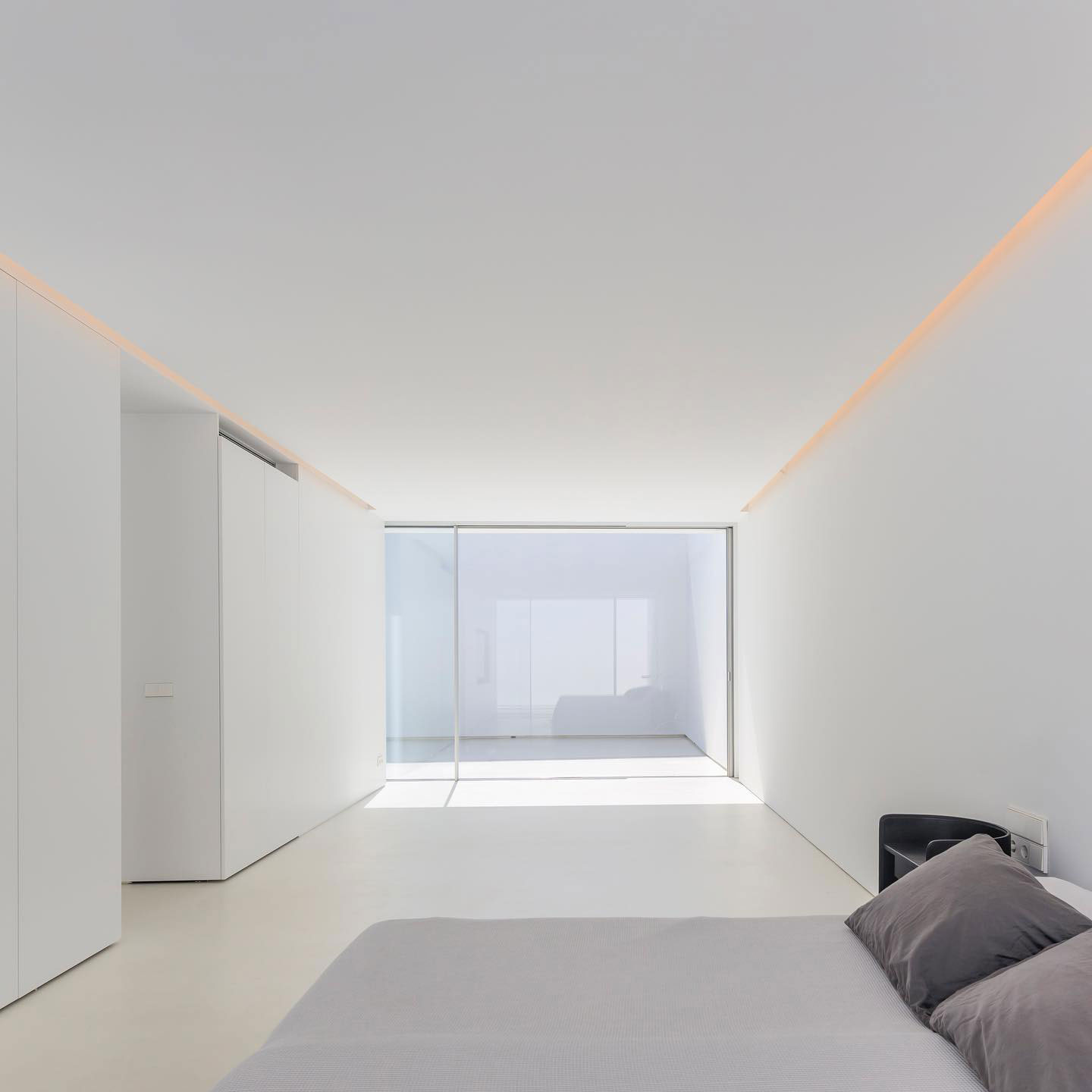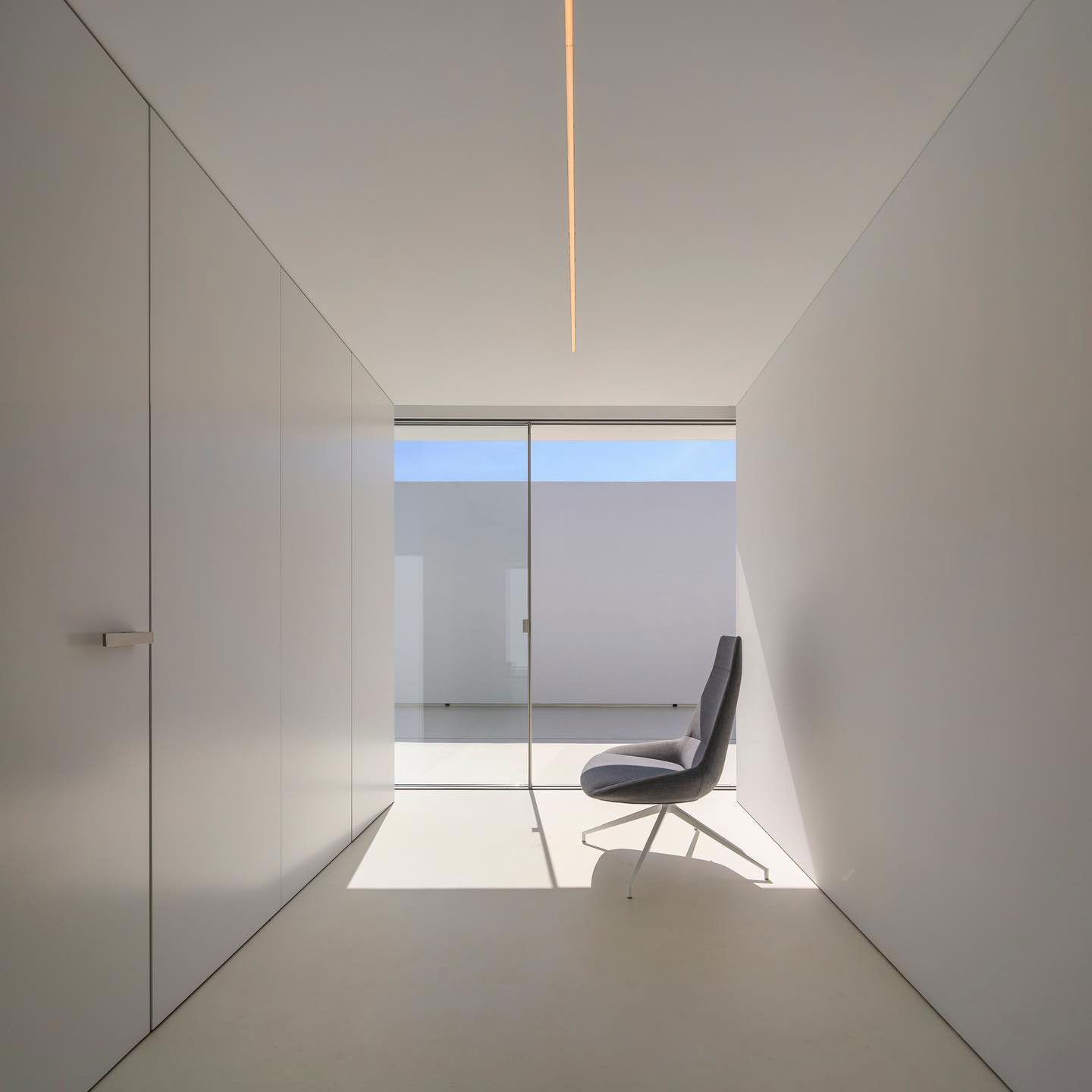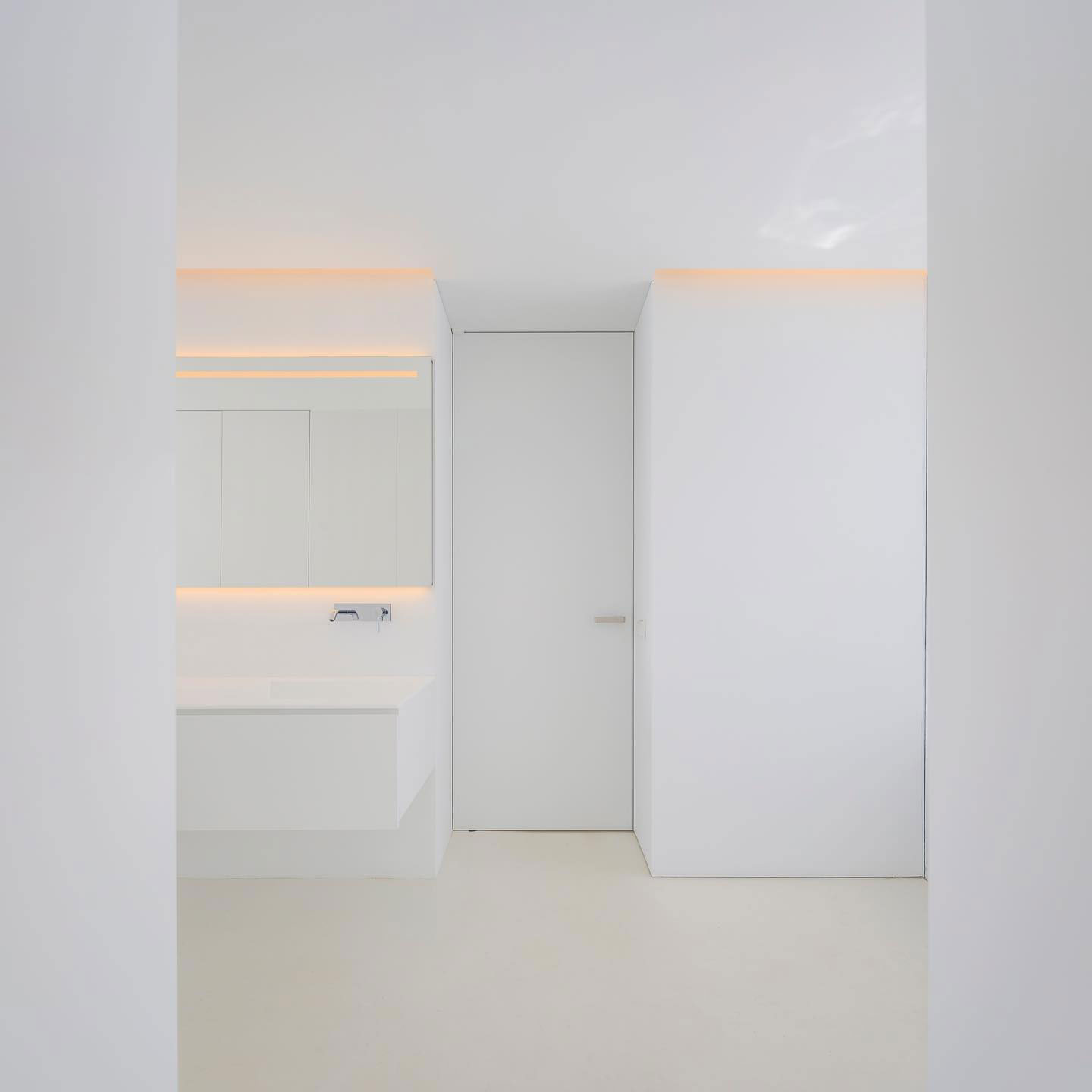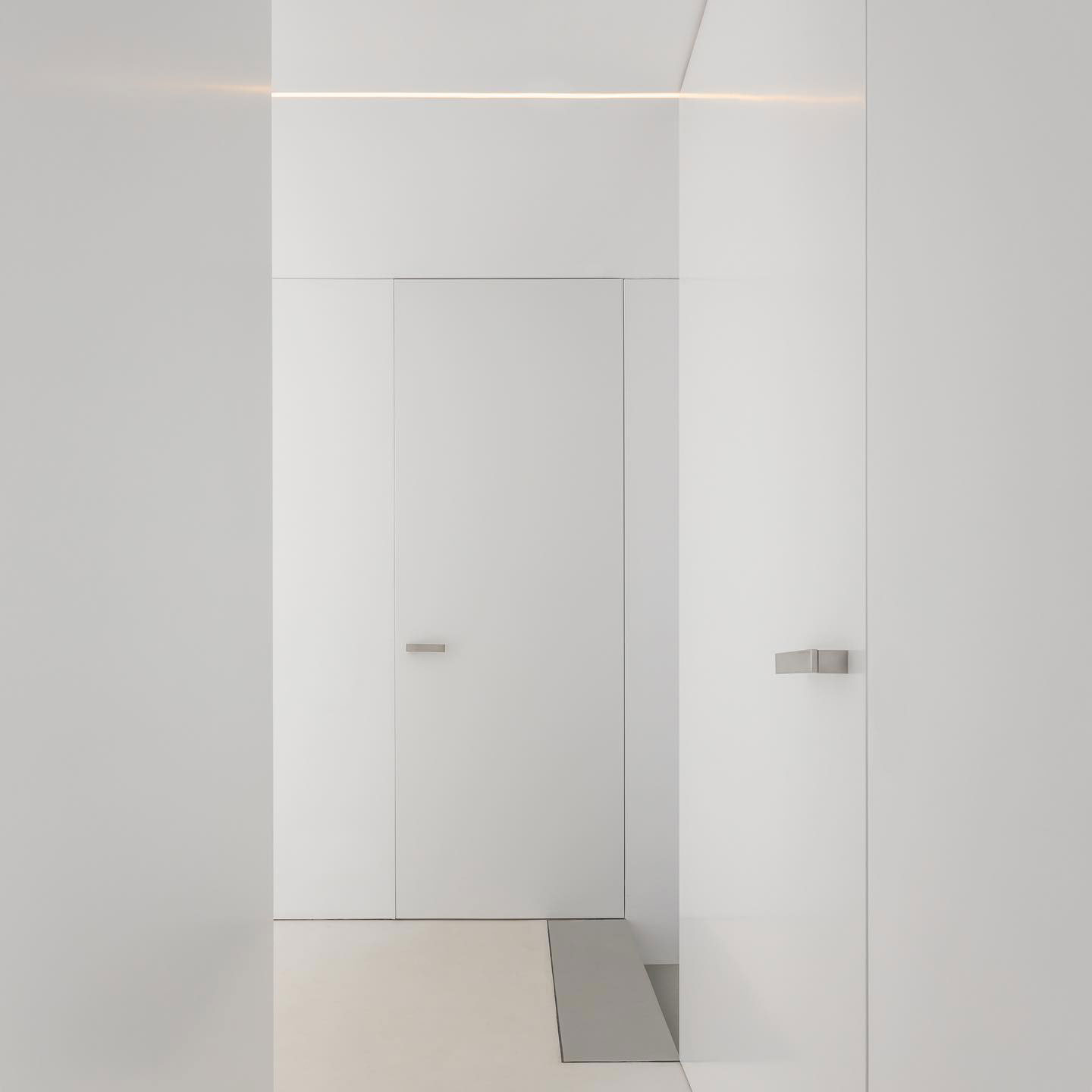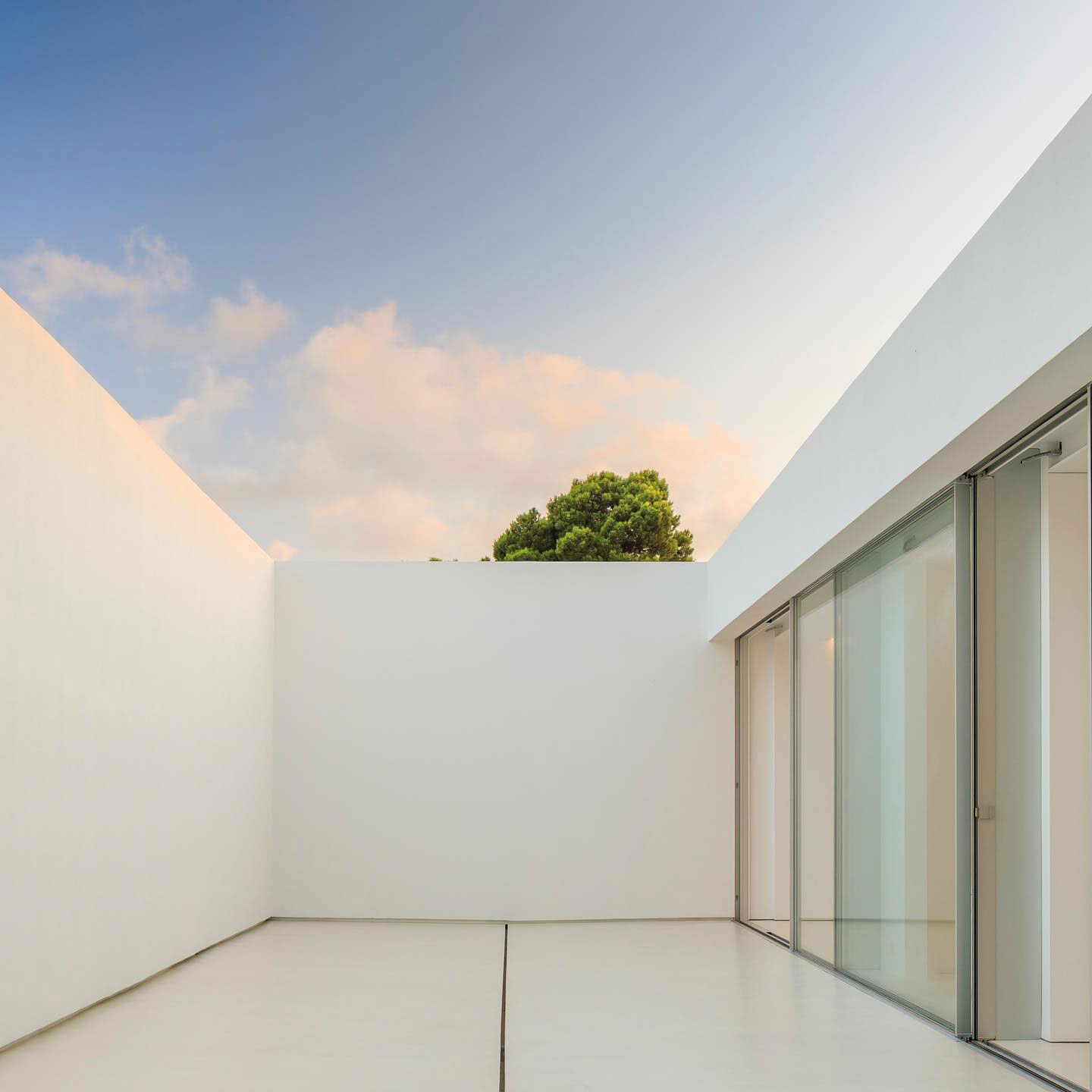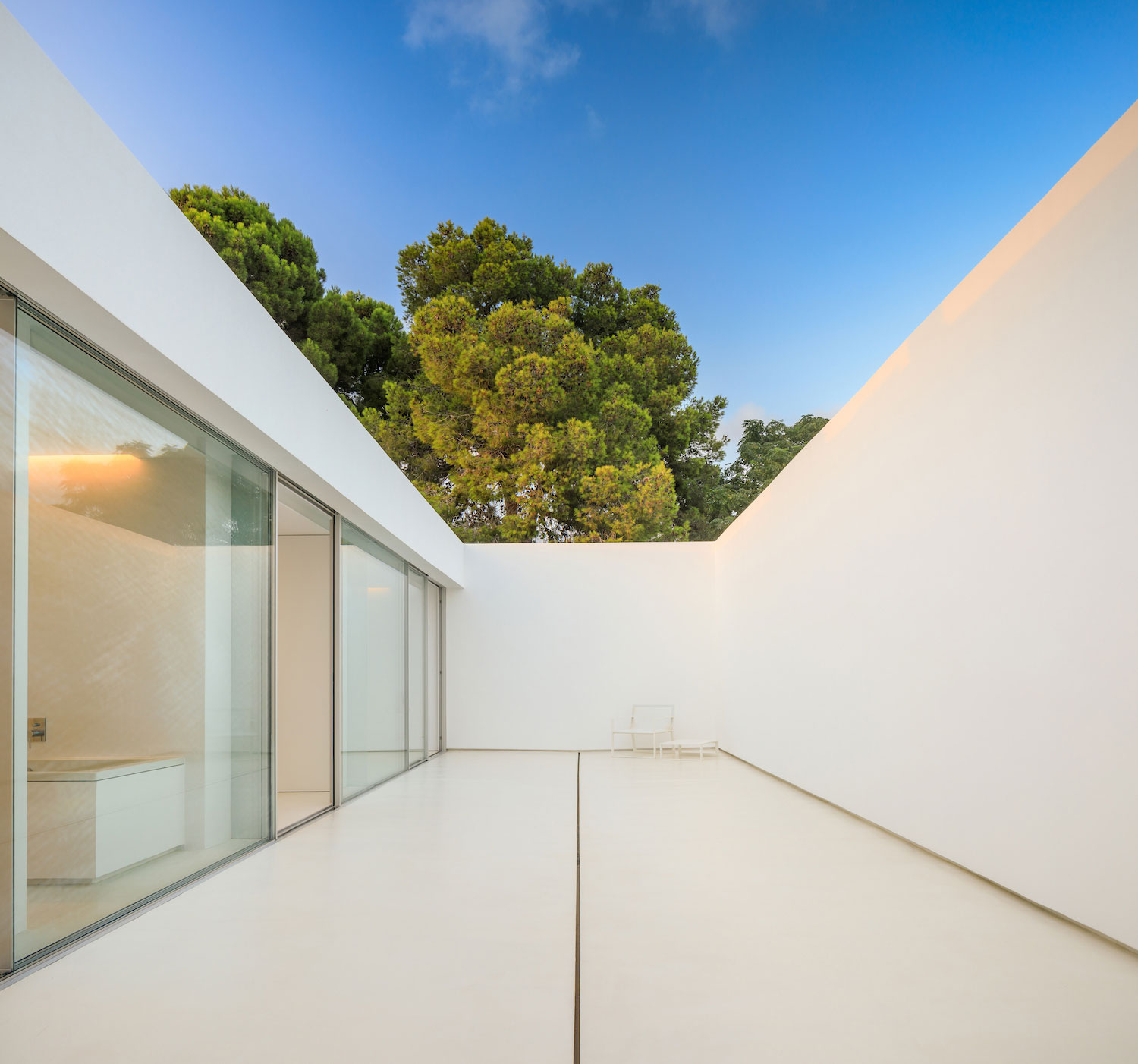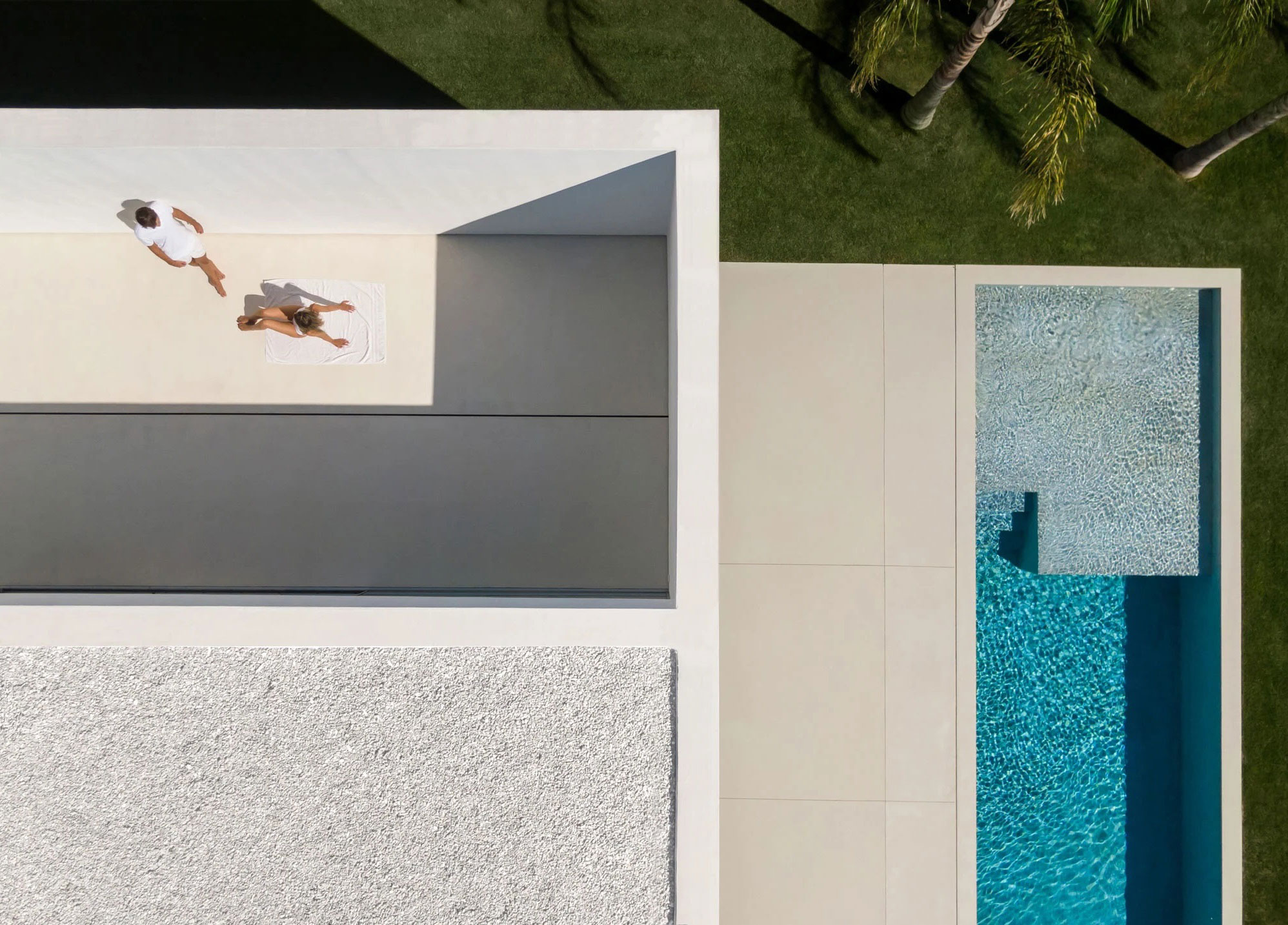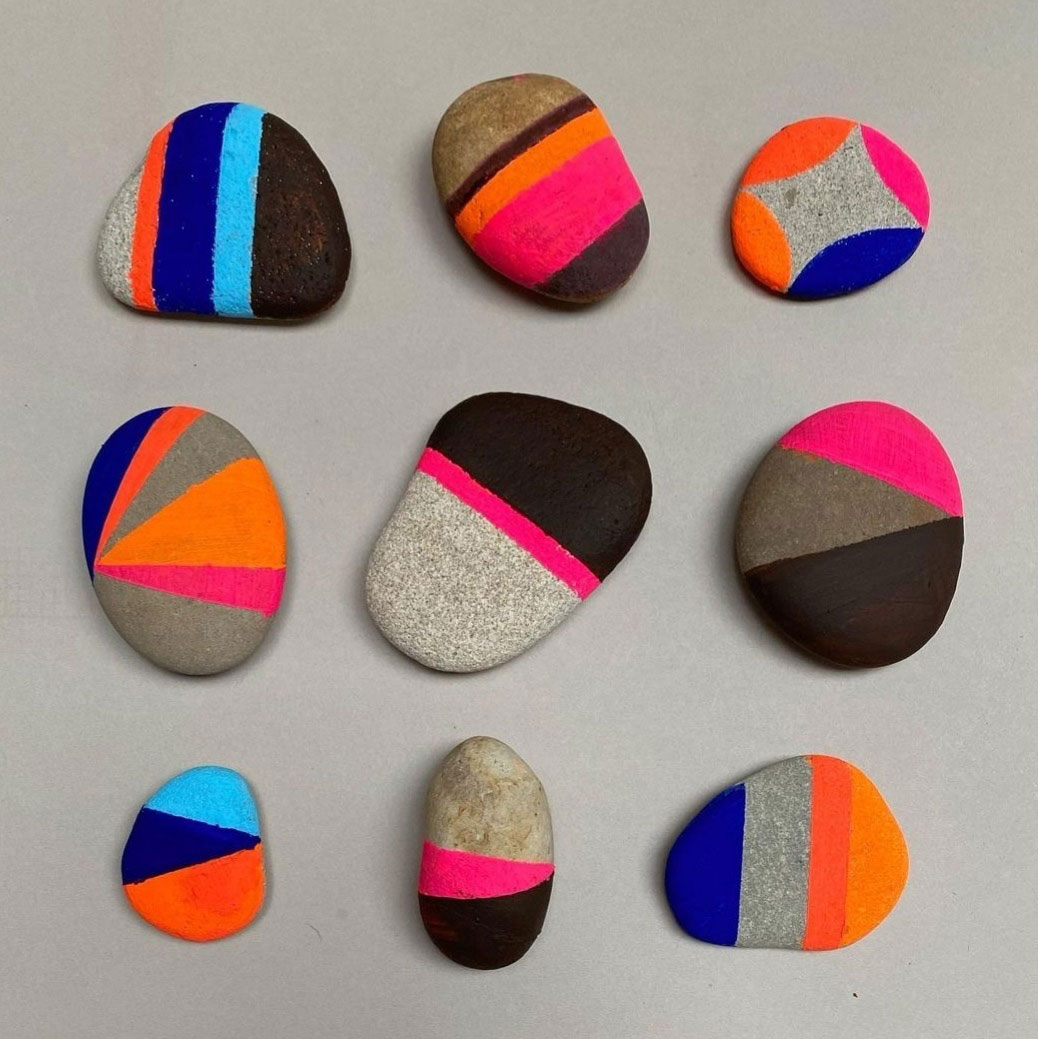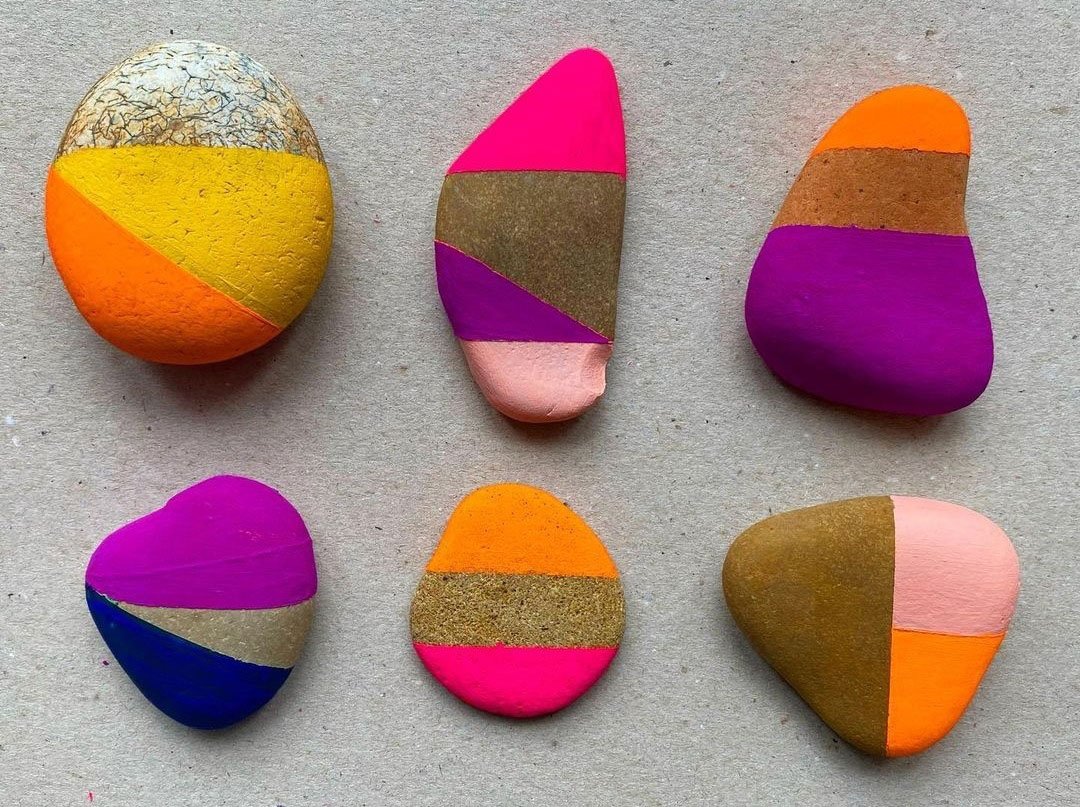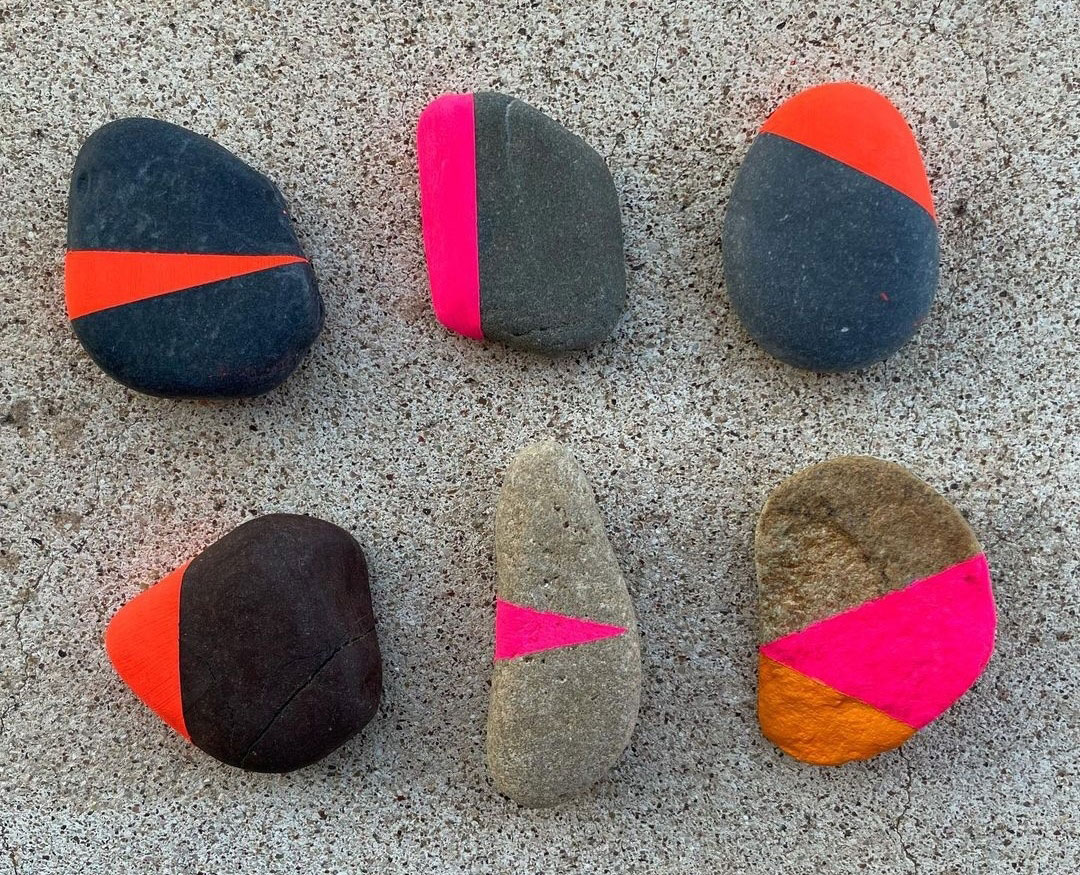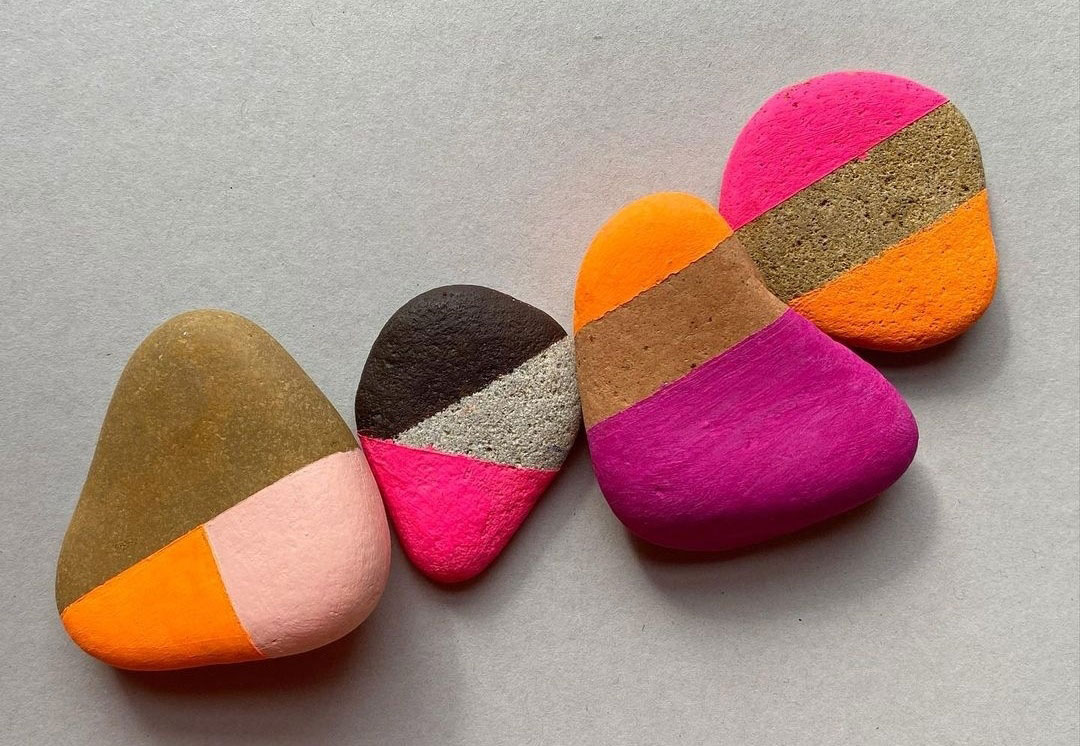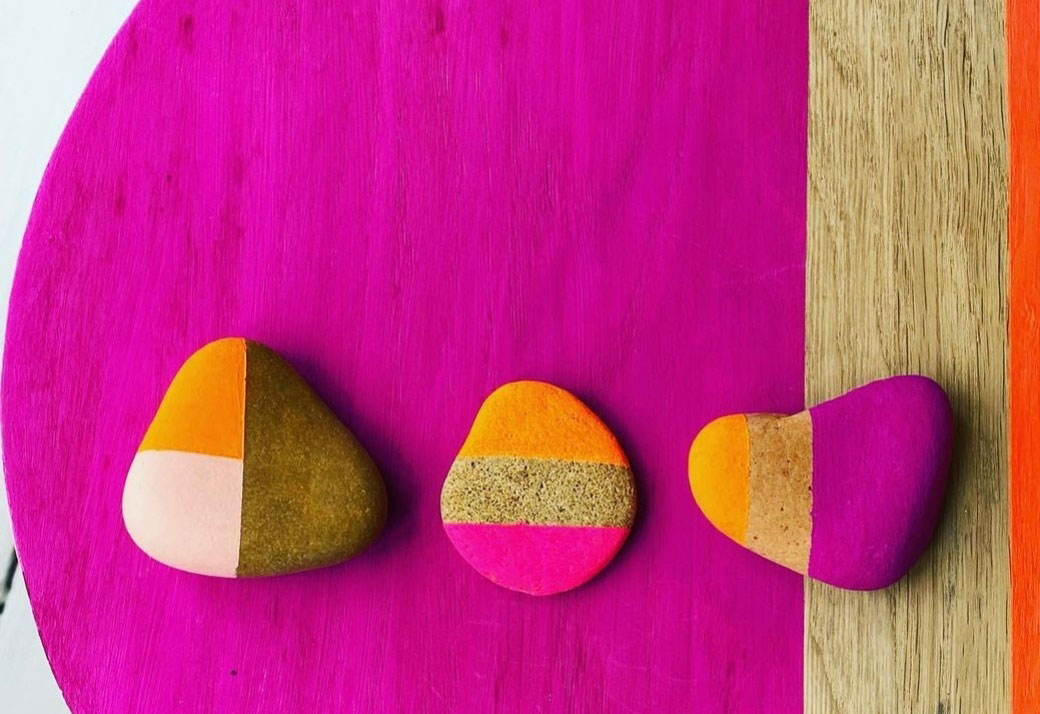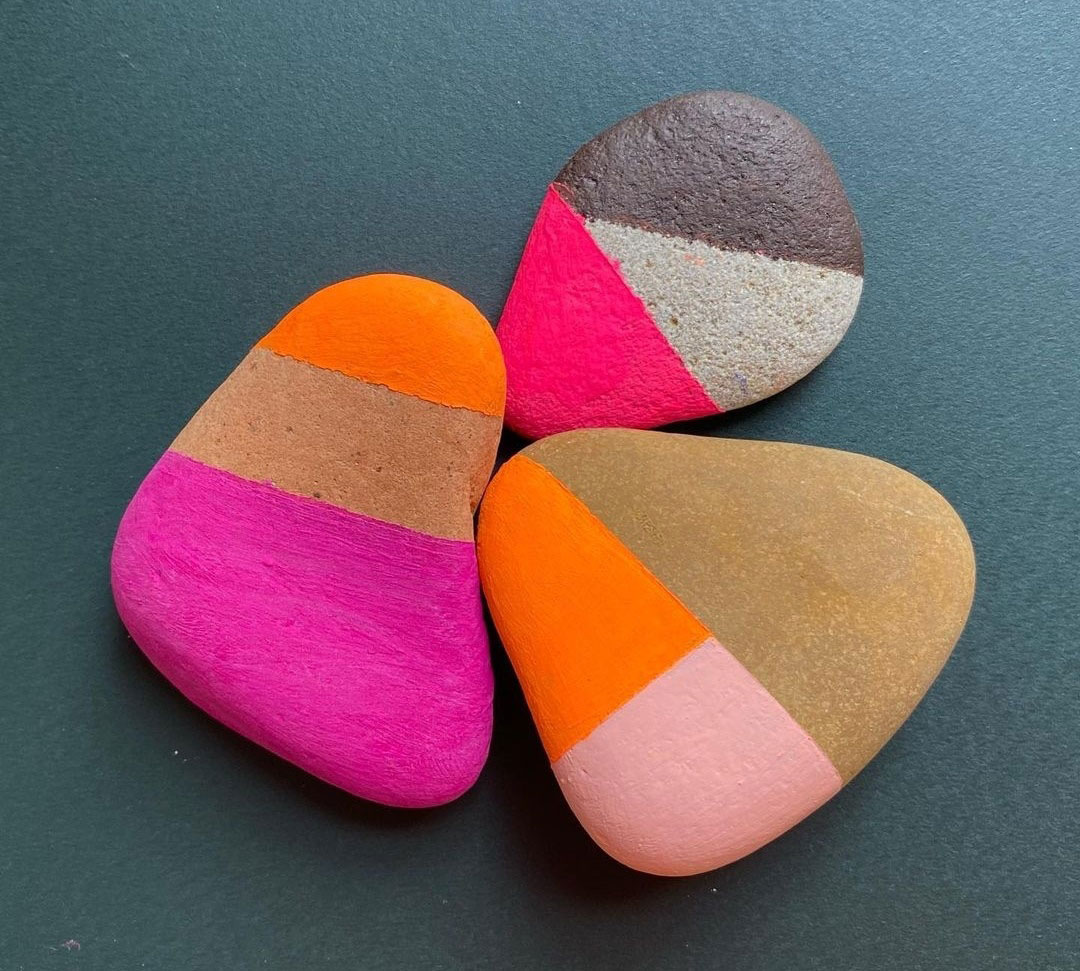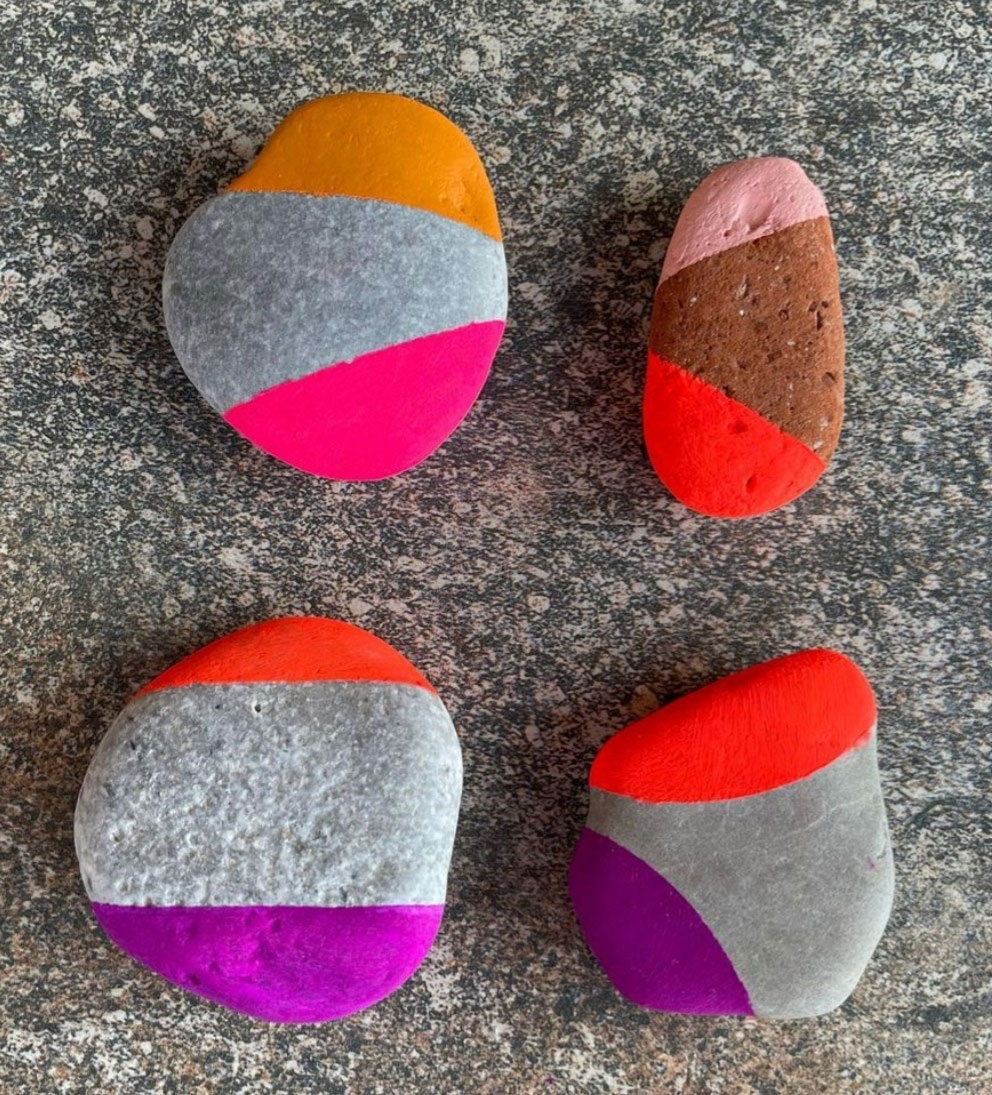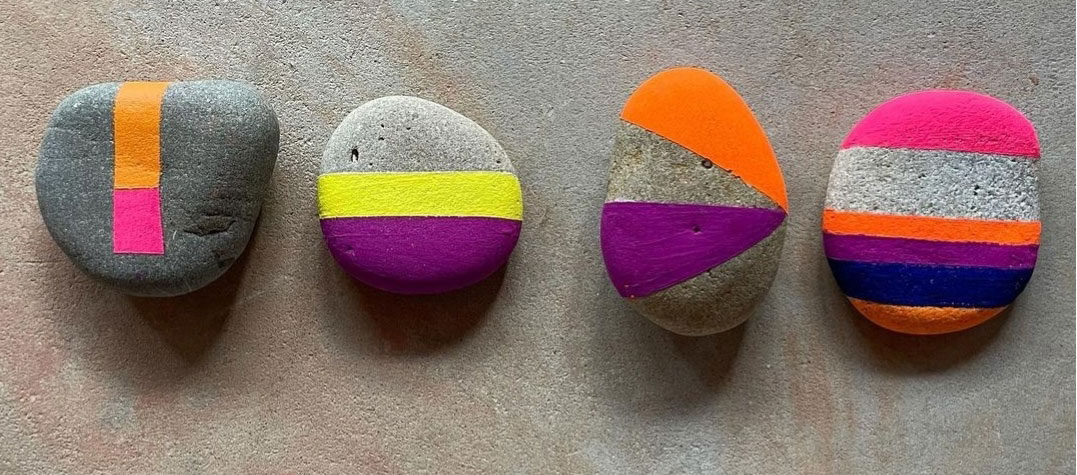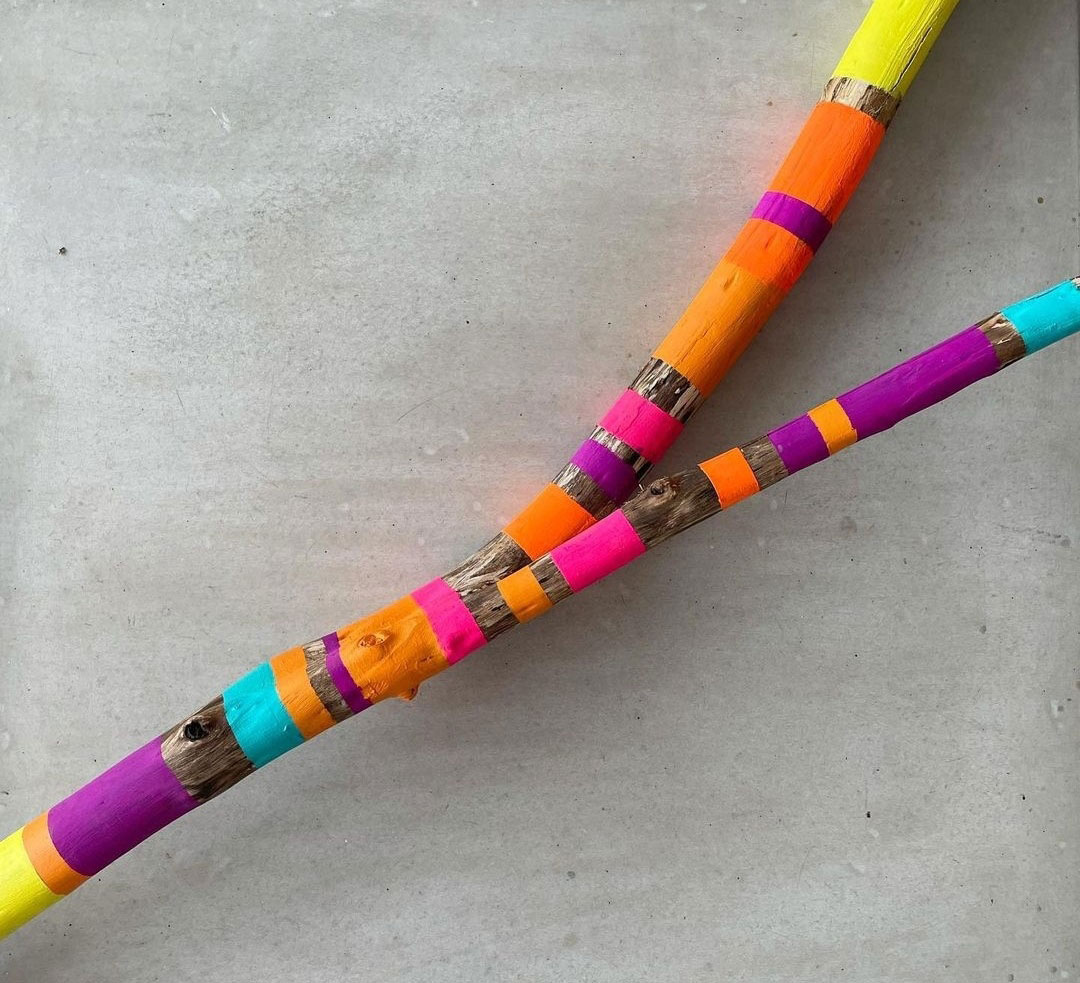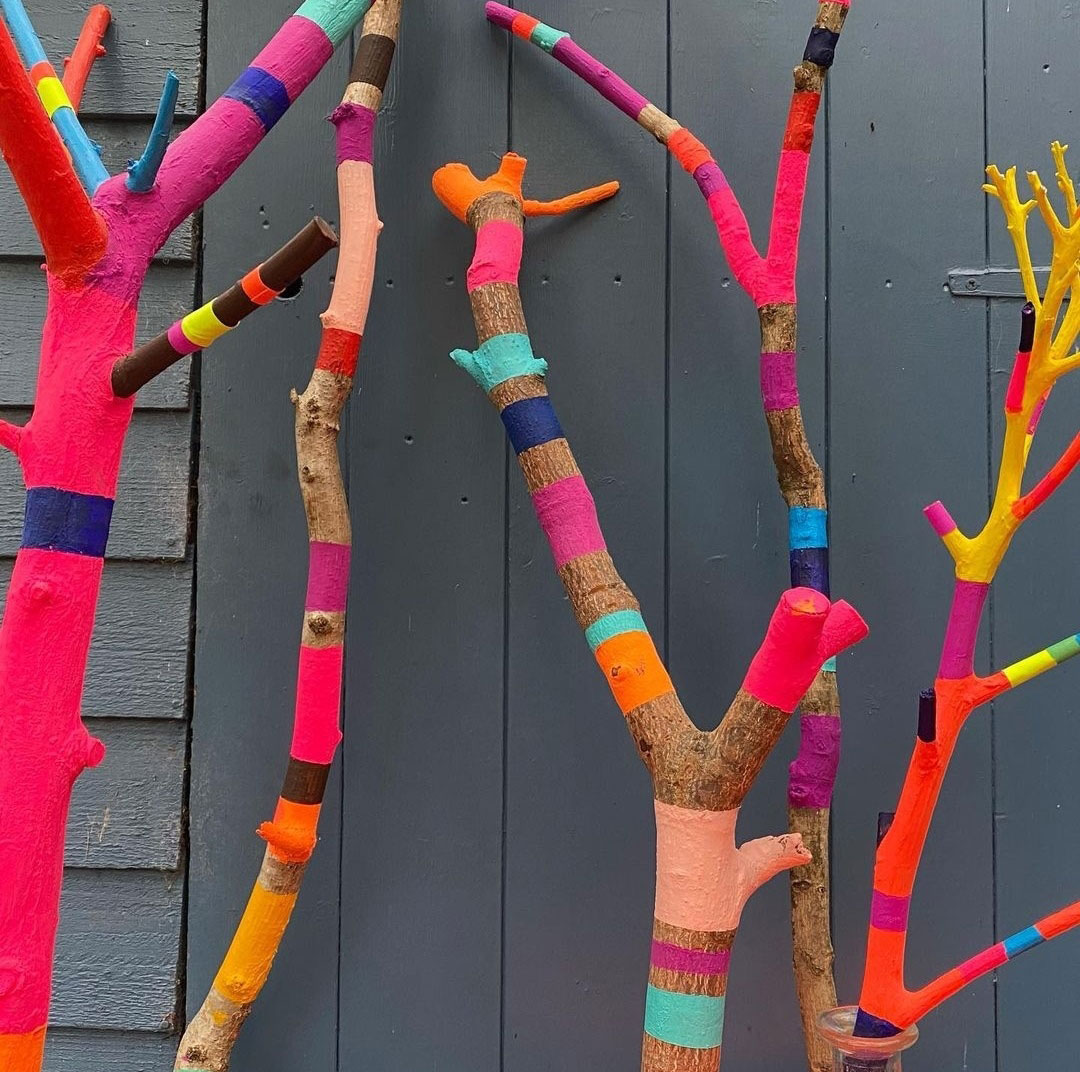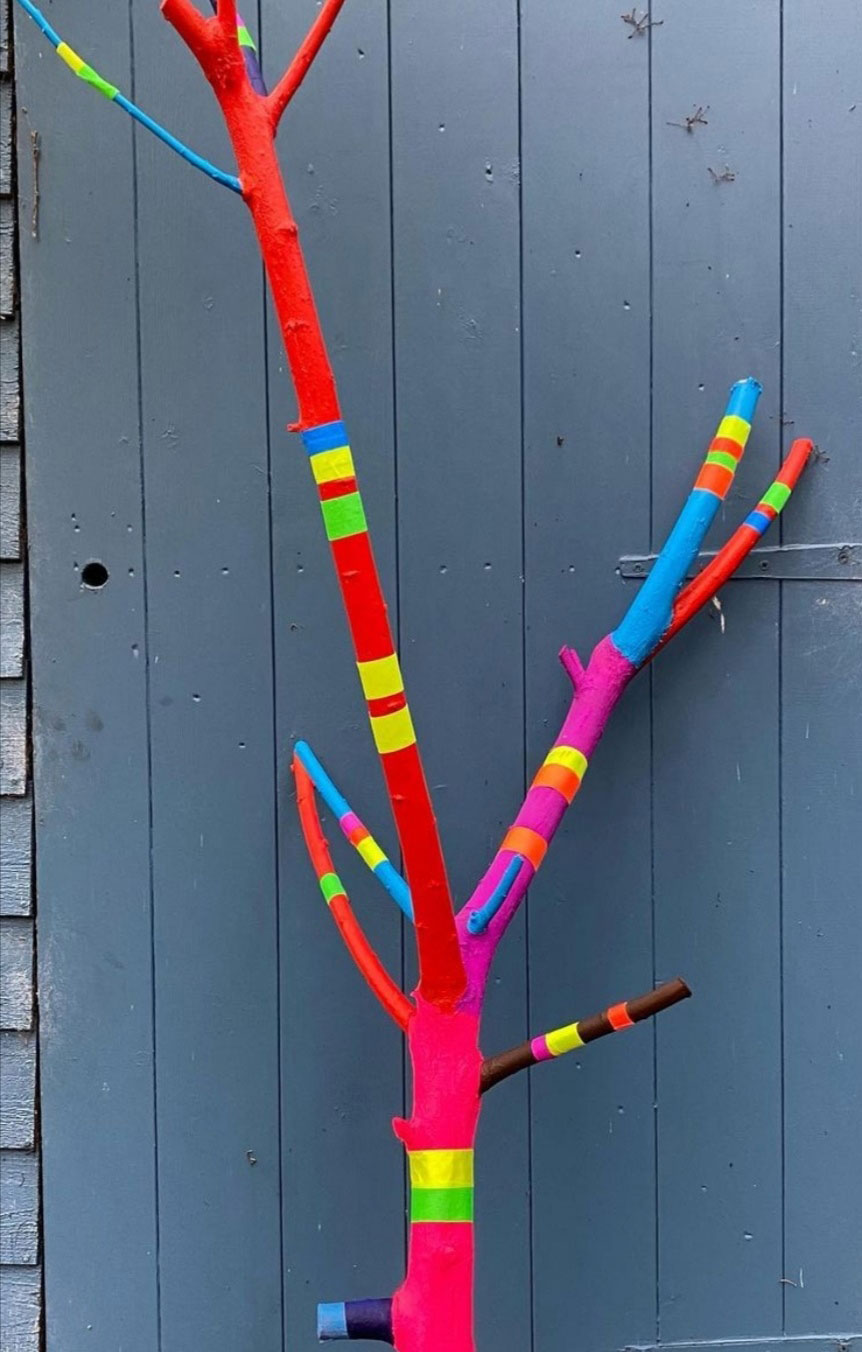INDOOR STREETSTYLE
PUBLIC SPACE | ROUBAIX
L’artista anglo-nigeriano ha disegnato recentemente Colorama skatepark nella città di Roubaix, nell’estremo nord della Francia. La sua matrice stilistica africana riaffiora nella scelta di grafismi semplici e di colori accesi, perfettamente in sintonia con l’immaginario giovanile.
Questa nuova funzione si insedia all’interno del centro culturale La Condition Publique, in un magazzino ottocentesco ritmato da pilastri. La preesistenza architettonica viene pienamente rispettata, nonostante l’inserimento dei dispositivi e delle piste per le corse in skateboard. Sono soprattutto questi ultimi elementi a essere inondati da colori squillanti ed energetici, valorizzati da un’illuminazione brillante.
Il fatto di intervenire in uno spazio chiuso, assieme alla forza cromatica del paesaggio, rafforza il senso della comunità urbana e dell’identificazione.
Indoor streetstyle – The Anglo-Nigerian artist recently designed Colorama skatepark in the city of Roubaix, in the far north of France. His African stylistic matrix resurfaces in the choice of simple graphics and bright colors, perfectly in tune with the youthful imagination.
This new function takes place within the La Condition Publique cultural center, in a nineteenth-century warehouse punctuated by pillars. The architectural pre-existence is fully respected, despite the inclusion of devices and tracks for skateboard racing. It is above all these latter elements that are flooded with bright and energetic colors, enhanced by bright lighting.
The fact of intervening in an enclosed space, together with the chromatic force of the landscape, strengthens the sense of the urban community and of identification.

